Written by: Belinda Brooks
Oral Story Teller: Chief Rodger Collum, BTBB
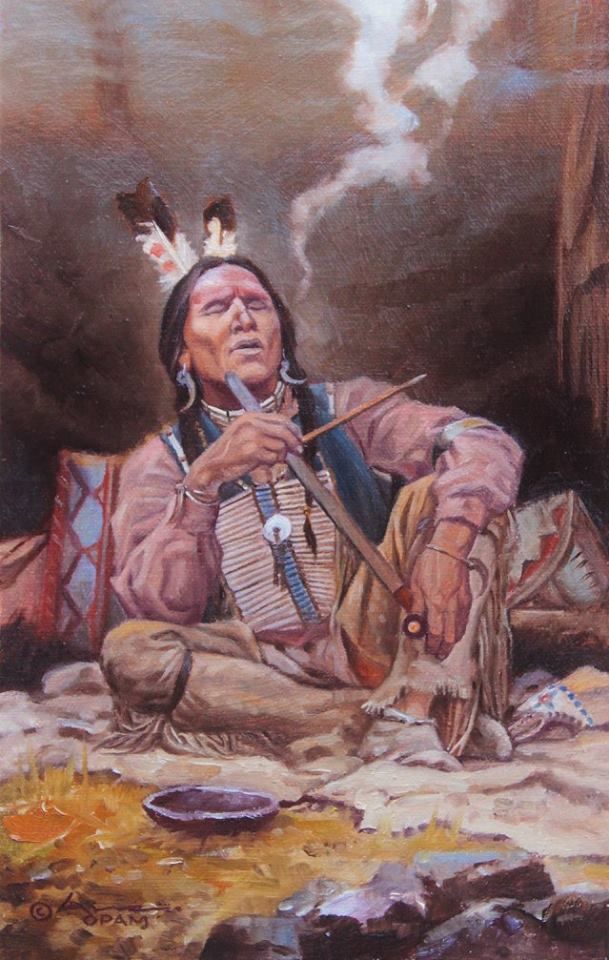
Rodger was chosen to be the next leader of his family/people by his elders during the leadership of his grandfather, Chief Parrain, Clarence Desadier. From the age of 5 until he was 16, Rodger was required to attend each “Meeting of the Elders” on Bayou Bourbeaux. During those years, Rodger was taught the story of his people and had to repeat it to the elders over and over. They wanted to be sure that he got it right. When the elders died, Rodger would be the one to reveal these secrets to their descendants.
When asked, “Why, after all these years, have you decided to go public with your tribe?” Chief Rodger Collum replied, “My ancestors raised me for such a time as this. It is time to reveal the secrets and tell the story of my people.”
The secrets of the Butte Tribe began at Bayou Bourbeaux over two hundred years ago. Only a handful of warriors at any given time knew the secret of Butte Hill. The few that did spent a lifetime guarding it.
Note: Butte Tribe lineage is a uniquely mixed tribal bloodline (Texas and Chitimacha Indian) of ancestors born and raised on Bayou Bourbeaux in Natchitoches Parish, Louisi ana.
BUTTE CHIEF #1 – CHIEF WHITE SMOKE
JOSE FRANCISCO PEREDA (1778 ~)

SAN ANTONIO MISSIONS

Texas Spanish Colonial Missions were religious outposts established by the Spanish Catholic Church with a specific purpose of spreading Catholic doctrine and Spanish culture to indigenous people of Texas. Additionally, missions gave Spain a toehold in claiming Texas frontier land. The first Texas mission to be established in May of 1718 was San Valerio, known as the Alamo to many. These missions had a profound effect on the way that Native Americans lived their traditional lifestyles. Forced to participate in baffling religious practices, subjected to farming crops rather than continuing as hunters/gathers, and struck with deadly European diseases that nearly decimated over half of their population, Mission Indians led their day to day lives being secularized by friars of the Catholic Church. Natives were free to enter missions by choice, but once in the missions, they became subject to Spanish rule and the Catholic Church.
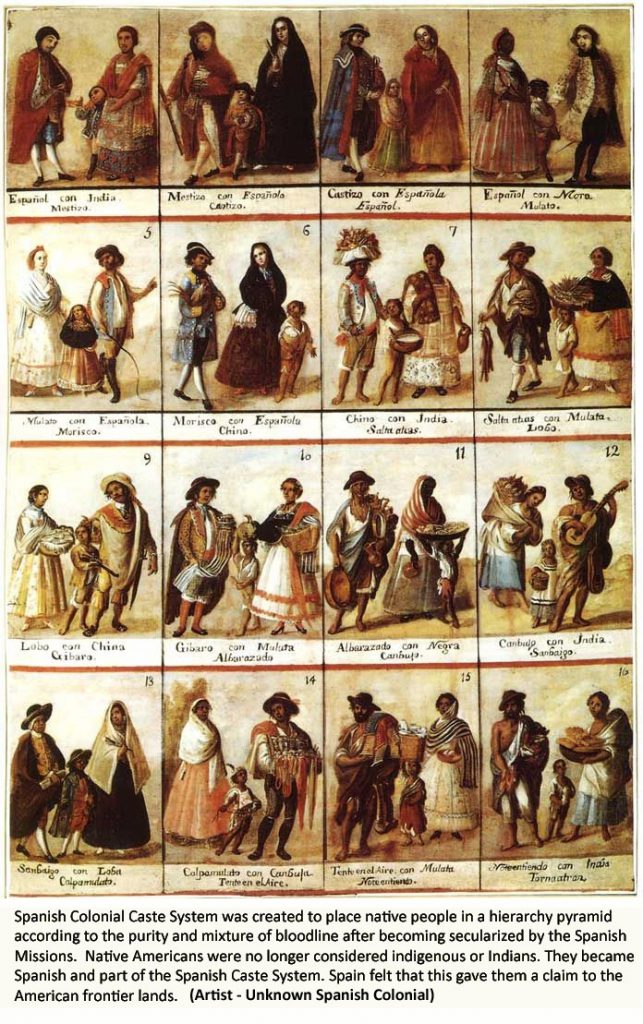
Five San Antonio Missions were established near the San Antonio River. Baptismal records from two of these missions included ancestors of Butte Indians: San Valerio (the Alamo) and San Fernando. For the Butte Tribe, baptismal records for the majority of their ancestors, as well as death and marriage records, came from San Fernando Mission. In 1793, San Valero Mission was considered secularized, meaning that Indians in that mission were no longer considered Indians of Texas. They were now Spanish. As Spanish, they became the lowest members of the Spanish cast system.
WHITE SMOKE & TWO MOONS


Franco Jose Pereda Montano, aka Chief White Smoke, first chief of Butte Indians of Bayou Bourbeaux, was baptized at Basilica of Saint Joseph and Our Lady of the Heart Catholic Cathedral in Mexico City on 10 March 1778. His parents were Juan Pereda and Mari Antonia Montano.
Ana Maria Leal, aka Two Moons, wife of White Smoke, was baptized at La Purisima Concepcion (Temple of Immaculate Conception) in Sinaloa, Mexico, on 13 February 1782. Baptismal records state that she was born on 26 January 1782 to her parents, Juan Jose Leal and Gertrudis Corvera.

The next account of their existence was found at San Fernando Mission at the baptism of their first child. The record listed both Jose Francisco Pereda and Ana Maria Leal as the birth parents of a son, Joseph Pereda Desadier, on 10 February 1798. This son became the second Butte Chief.
ESCAPING THE MISSIONS
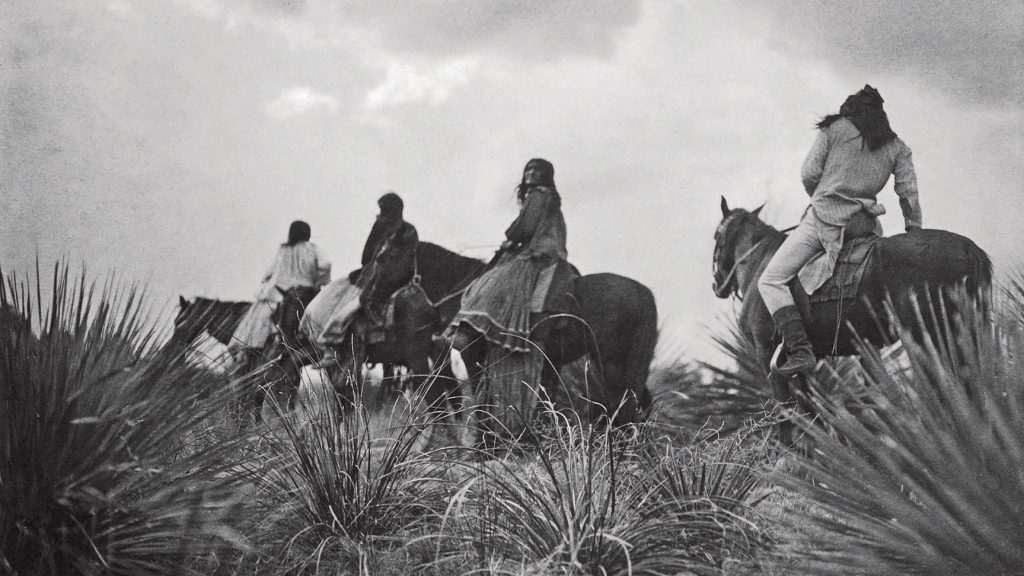
White Smoke and Two Moons made their way to San Fernando Mission from Mexico before the birth of their son in 1798. The story of their arrival at San Antonio Missions is a mystery. What is known are the stories that were handed down from the Butte Tribe elders to Chief Collum. While at the missions, White Smoke worked on a Texas mission ranchero located some distance outside of the mission compound. Ranching was the most profitable activity for the missions. It was also the source of greatest contention between neighboring missions and townspeople because of raiding Apache, Comanche, and Washita Indians.
San Fernando was the hot-spot of an active contraband trade between Central Mexico and Louisiana.
Life at the missions was everything that White Smoke loathed. Suppression of his people’s native customs, forced enculturation, and strict/rigid teachings of Christianity. He waited until the birth of his child to escape. His plans were in order as his band of braves waited for his command.
Some ranchos had compounds built to house Mission men and their families. In White Smoke’s case, that worked to his advantage. When the time arrived, they escaped the ranchero with a wagon and a small herd of horses. Leading up to the escape, White Smoke traded furs and horses with the French for guns and ammo. He timed their exodus so that it would give his band as much of a head start as possible. Their destination was the Louisiana bayou across the Red River. Buffalo roamed there. Many of White Smoke’s family waited in the woodlands for his arrival.
White Smoke was a spiritual man. He believed that the Great Spirit was leading him to a place of green grass and buffalo. The band worked its way toward their destination, stealing and raiding when the opportunity arose. Weeks later, they crossed the Louisiana territorial line with horses, furs, and a stash of other contraband. White Smoke and his followers found the land of the Great Spirit. On this land, his people would live the life intended for them to live.
THE APACHE

The elders told a story of White Smoke on the trail to Louisiana. One late afternoon, the band was making camp for the night. One of the scouts came galloping into camp to warn his people. Raiding Apaches were headed their way. Quickly, White Smoke’s band grabbed their weapons and mounted their horses. With painted faces, White Smoke and his men waited to battle the Apaches.
White Smoke was a mighty warrior. He had no fear of death and coveted bouts to the death to show his prowess. The Apaches saw that White Smokes band was waiting for them. They stopped about 50 yards from their rivals. White Smoke moved forward on his horse, waiting for the Apache leader to meet him in the middle of the battlefield. As the two leaders faced each other, White Smoke called out “Gósé” in the Apache language as he looked at his opponent with cold-black eyes, a smirk on his face. The Apache turned red-faced and challenged White Smoke by raising his lance and shouting. The challenge was accepted as both rode back to their band of men.
White Smoke’s horse was high-strung with anticipation. It knew his master’s touch. As White Smoke turned to face his opponent, he slightly touched his stud’s belly. The horse reared up on his hind feet and leaped forward to meet the challenge of his master.
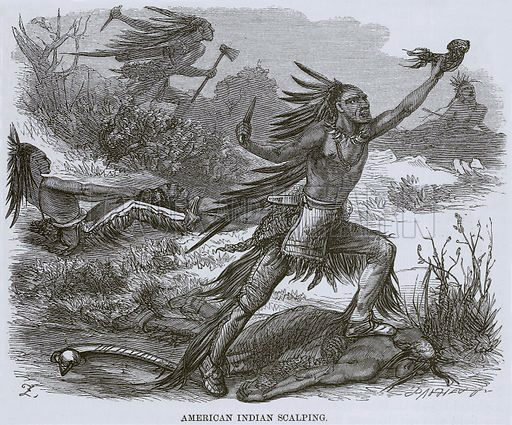
As White Smoke rode past the Apache, he reached out to draw first-blood with a slight touch of his spear and sliced the Apache’s cheek. As he turned to ride back to his men, he called out “Gósé” once again to humiliate his adversary. Sitting high on his horse, White Smoke continued mocking his enemy while his horse stood still and shivered with keenness. With one slight touch, the horse eagerly rushed forward as White Smokes’ spear found its target in the Apache’s heart. White Smoke leaped from his horse, snatched the Apache’s hair, and, with one quick, sharp slice of his knife, raised the scalp high in the air with a loud war cry.
The elders told Chief Collum that White Smoke enjoyed humiliating his opponent before the kill. (“Gósé” was the Apache word for dog.)
HUNTING CEREMONY

During hunting season, tribal men would gather for tribal hunts. Before each hunt, a traditional hunting ceremony was offered to the Great Spirit. Braves would gather at the appointed spot set by White Smoke. Upon arrival, White Smoke would sit in an open space on the ground with his sacred pipe. Braves would form a coiled circle around their chief as White Smoke began chanting a prayer to the Great Spirit to bless the hunt. He drew a smoke from his pipe. Passing the sacred-pipe around the circle, each brave followed their chief’s lead. The band then rose from their ritual spot, mounted their horses, or walked into the woods and began the hunt. At the end of the hunt, the band of hunters would meet in the ritual spot with their kill. Hunters would dress the meat together and divided the spoils between clans to assure the survival of the families. Elders, households of widows, and those in need were served first.
PIT-FIRE LOG
Oral history of three visitors from the Upper Yatachez tribe was told. As they traveled to the Butte village, the men came upon a Butte girl gathering leaves in the forest. They raped her and left her for dead.
Later on that afternoon, the girl was reported missing. A search party was sent out to find her. It wasn’t that long before she was found raped and injured. Surprisingly, she was still alive and able to name her attackers.
The Yatachez were on the trail home when White Smoke’s band caught up with them. Brought back with hands bond, running behind trotting horses, the three Indians feared what was before them at the Butte village. They were pulled through two lines of angry Butte women who were screaming and beating the molesters with sticks and stones. In the middle of the village stood three large poles where the rapist were tied until justice would be served the following day.
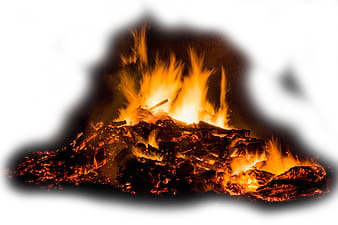
When the next day came, the three men were taken to a place outside of the village. A flaming fire with red-hot coals was burning in a deep pit. Across the pit was a huge log. On this spot, one of the captives was set free. White Smoke was waiting at one end of the log. The captive was given a knife and stood at the other end.

As the warrior mounted the log from opposite ends, White Smoke moved steadily toward the center of the log. At the other end of the log, his opponent was given a knife and urged forward by the tip of a spear in his back. They met in the middle where White Smoke took first blood by slicing the captive’s cheek. The captive was taken by surprise and almost lost his balance. White Smoke stepped back to mock the captive’s expression of fear. The teasing continued until White Smoke tired of his play. With one balanced jump forward, White Smoke squatted with his knife waving and sliced the captive’s ankle tendon. White Smoked watched as the captive lost his battle with the log and fell screaming into the pit of fire. His last vision was the grin on White Smokes’ face.
The games continued until White Smoke’s justice was poured out on all the prisoners. At the end of the game of the pit-fire and log, White Smoke received the sacred fan of red feathers. The fan remained in his lodge until the next battles were fought, and a new winner declared.
CONTRABAND TRADE

White Smoke and his descendants, Joseph Sr., Joseph Jr., and Felix, were heavily active in contraband trade. Contraband trade involved the movement of illegal cattle, horses, and other trade items such as furs, cotton, tobacco, and other crops over the Texas territorial borderlines. Spain and Mexico opposed all trade with anyone East of the Texas border. The long ongoing trade between White Smoke and Texas was too profitable to squelch his desire in his contraband movement.
When running contraband across Texas lines, there were specific contraband trails that were traveled to bypass the main roads where officials would be waiting. For White Smoke, his path led straight through Bayou Bourbeaux. Today that mustang route could be found by following US Highway 84, through Bayou Bourbeaux on LA Highway 1226, all the way to the Sabine River. (Contraband article)
UNWELCOMED SETTLERS

Butte Tribe has spent a lifetime protecting its land from outsiders. When settlers from the East started their move West, they had no regard for the indigenous people of America who had for thousands of years respected and cared for the land that belonged to them. Stopping on Butte land was not a wise thing to do.
Twelve Scottish fur traders traveling on horses with a wagon full of supplies decided to set their stakes on Butte land. They stopped at the old Lemoine’s place on the Indian Trail and set up camp. As they settled down for the night, they had no idea of what tomorrow would bring.
As the early morning sun came up in the East, a few bird calls and a little rustling of horses could be heard. A sudden loud, sharp yelp filled the air. Startled, the intruders grabbed for their weapons but were not fast enough to hold back the swam of natives attacking them. White Smoke, his son, Powder Face, and the rest of the band, attacked the hunting party so fast that the men didn’t know what hit them. Warriors came from everywhere: jumping from trees, behind bushes, riding horses down the trail. When the smoke had settled, twelve scalps were hanging from the warriors’ belts.
Twelve bodies were burning with the blazing wagon. White Smoke, a great warrior, and tormentor, returned to his village with a small herd of horses, a load of hunting supplies and a bloody scalp hanging on his spear.

When Chief Collum was told this story as a little boy, his grandfather, Chief Clarence Desadier, took his grandson to the exact spot of the attack. At that time, several pieces of the wagon remained as proof of the attack. The only thing that remains today is the rim of a wagon wheel that surrounds a tree that grew through it. Since the publication of this story by social media, Chief Collum received a call from previous owners of the property who now live in Kentucky. The man read the story and realized that several years ago, he and his brother were walking through the woods and found the wagon wheels. Not knowing the story behind the wagon wheels, they dug them out of the ground and took them home to use as landscape pieces. The man kindly returned the find to Chief Collum at Bayou Bourbeaux. (Pictures of wagon rim and wheel)

FORT SELDEN
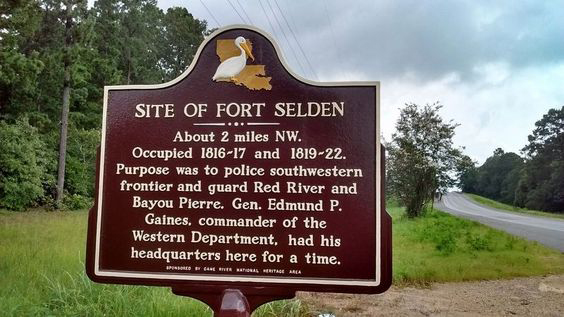

Fort Selden was established in 1820 by the United States as a temporary means of controlling the waterways between the United States border and the Neutral Strip between the US and Mexico. (Fort Selden article) It was located north of Natchitoches, South of Bayou Pierre, on the highest hill in the area. The purpose of the fort was to keep a watch on the borderline and protect inhabitants within that area. The strip of land between the two territories was called No Man’s Land. Formed by a treaty between Mexico and the United States, the land would belong to no one until a decision was made on the border between the two countries. It was a lawless place where Indians, among many other unruly people, were pressing for rights of freedom against all the odds.
White Smoke, along with other tribes in the area, recognized no treaty with white men accept treaties that benefited his people. Bayou Pierre was a main waterway for Butte Indians. The United States had placed the fort at a strategic place on the bayou, which was not to the liking of White Smoke. Native Americans hunted, fished, and carried contraband on its waterway. He was even more unpleased with control of the channels by U. S. military.

One early morning before daybreak, the Buttes loaded up in canoes on Saline Bayou headed for the river. From the river, they traveled north until they came to the first curve in the tributary and turned left to follow Bayou Pierre. White Smoke was careful to dock the canoes before he made visual contact with Fort Selden. Working their way silently through the woods, the fort guard was surprised with a firm hand grip over his mouth and a knife across his throat. Part of the braves entered the fort and began raiding the supply house for guns, ammo, and any other thing of interest. The remaining braves made way to the military horses. By the time the regiment got wind of what was going on and rushed for their weapons to stop the intruders, White Smoke’s braves were on their way South with the horses. At Opelousa, they would follow the trail straight to New Orleans to sell their contraband.

BOWIE BROTHERS

James “Jim” Bowie (1776-1836), known for his expertise with the famous Bowie knife, was raised and spent most of his life in Louisiana. In the western parts of Louisiana, his brother, Rezin, and he were best known as con-artists in land speculations as well as slave smugglers and chasers. The Bowie brothers partnered in 1818 with the well-known pirate Jean Laffite in the illegal smuggling of African slaves on the coastal lands of Louisiana. Slavery for blacks who were already in the country was still allowed. It was illegal to bring new slaves from foreign countries to the United States. (Bowie article)

The Bowies paid Laffite a dollar a pound for his slaves. These lost-but-found smuggled slaves were turned in to authorities for bounty. The slaves then became property of the Bowie Brothers, who increased their profit by selling them on the auction blocks in New Orleans for a considerable profit.

It was on one of these excursions that ten slaves escaped the capture of the Bowie Brothers. With the help of local anti-slave, underground people, the slaves made their way to north Louisiana. Native Americans were sensitive to the plight of African slaves in America. Red and black-skinned people were on the lowest level of the caste system. The runaway slaves found their way to the Butte village.
Several days later, the Bowies rode toward Bayou Bourbeaux with a native tracker. As they rounded a corner on the bayou trail, an arrow landed on the ground at the feet of Bowie’s horse. Waiting for them was White Smoke and Powder Face. The tracker greeted White Smoke respectfully. White Smoke knew the tracker but did not return the greeting, which was a definite sign that it was time the intruders turned around, left the way they came, and prayed they got away with their scalps.
Bowie had heard of White Smoke and knew that this was a band of Indians that he did not want to confront. There would be no trading done with White Smoke regarding slaves. If White Smoke had them, they were lost to Bowie. Bowie turned his party around and headed back toward the direction they came.
DEATH OF WHITE SMOKE

White Smoke lived a long life. In his lifetime, he took the lives of fourteen of his enemies. The date of his death is not known. What was known is that he lived to know his grandson, Joseph Desadier Jr., who was born in 1832. His son, Chief Powder Face, Joseph Pereda Desadier Sr., buried his father on Butte Hill. White Smoke’s grave was dug deep and narrow. He was buried standing up with his arms crossed. Inside his hands was placed his sacred pipe. At her death, Two Moons was buried beside her husband lying flat.
Two large, natural stones were placed on the graves of White Smoke and Two Moons. White Smoke’s stone was etched with an “X” and wavy lines flowing on top that represented a campfire with white smoke rising. Two Moon’s stone had two circles representing moons. So went the life of White Smoke, the first and greatest of chiefs of the Butte Tribe of Bayou Bourbeaux, buried on Butte Hill.
CONCLUSION
Six chiefs have been trusted with the guarded secret of Butte Hill. One chief, Chief White Smoke, was buried there on top of the sacred mound of Butte Hill. Generations of family members lived their lives, not knowing White Smoke or the stories of their Native American heritage. Only the elders knew the stories. These stories were handed down to the next hand-picked Butte leader. The leader was chosen at an early age by the acting chief. The elders believed that the day would come when their stories could be told without fear of the destruction of their people.
Chief Collum always knew that he was the family leader. It wasn’t until Rodger became a man and his ancestors had passed that he realized the importance and the responsibility of the knowledge that had been passed down to him. The Great Spirit honored the prayers of his elders by sending a revealer to inquire of the elders’ revelations.
When asked, “Why, after all these years, have you decided to go public with your tribe?” Chief Rodger Collum replied, “My ancestors raised me for such a time as this. It is time to reveal the secrets and tell the story of my people.”
The secrets of the Butte Tribe began at Bayou Bourbeaux over two hundred years ago. Only a handful of warriors at any given time knew the secret of Butte Hill. The few that did spent a lifetime guarding it.
Note: Butte Tribe lineage is a uniquely mixed tribal bloodline (Texas and Chitimacha Indian) of ancestors born and raised on Bayou Bourbeaux in Natchitoches Parish, Louisiana.
BUTTE CHIEF #2 – CHIEF POWDER FACE
JOSEPH PAREDA DESADIER SR. (1798-1868)

Written by: Belinda Brooks
Oral History by: Chief Rodger Lee Collum

Listed on the Mission’s baptismal records as his parents were Jose Francisco Pereda and Ana Maria Leal, who were both natives of the city. Understanding Catholic baptismal records during the Spanish occupation, the Spanish’s purpose of converting Native Americans to the Catholic religion was their way of assimilating natives to Spanish culture and claiming American land for Spain. To the ultra-religious Spanish, the indigenous people of America were ignorant heathens who needed salvation.
Therefore, Spain required Mission Indians to be baptized. Upon baptism, the priest would gift each native with a Christian name. That person would then become a Spanish citizen and no longer be considered Indian. Many indigenous people were baptized by the Catholic Church to give the appearance of compliance. Joseph’s parents were known by their Native Americans names, White Smoke and Two Moons. Chief White Smoke’s story reveals the escape from the San Fernando Mission.
When a Butte raiding party rode out from the village, Joseph would wear his signature painted face made with a white powder paste. He carried the Spirit name of Powder Face. Raiding, killing, and torturing, their enemies were not given a second thought when it came to protecting their lands and family. Joseph made his first kill at the age of 15. At that time, White Smoke considered his son a man.
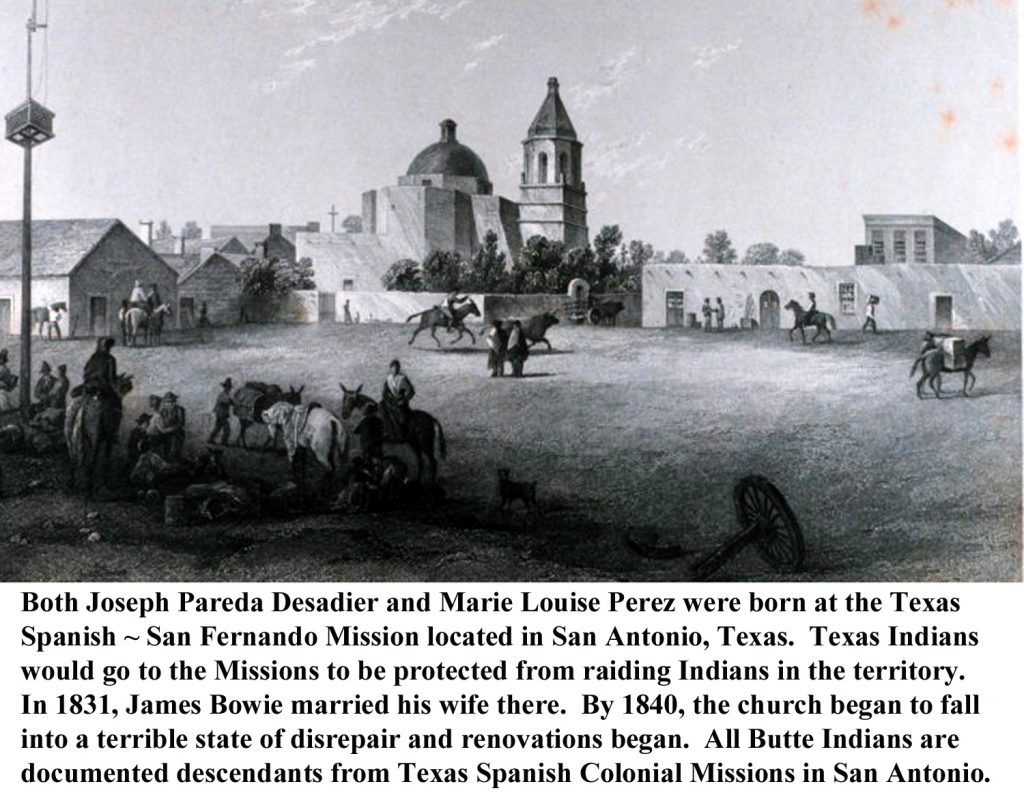
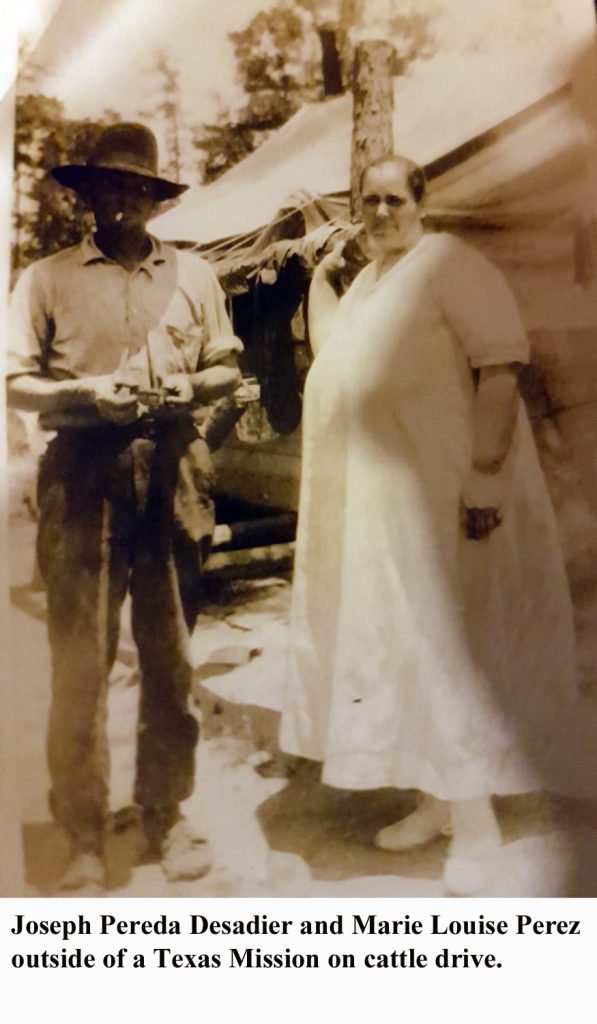
In 1827, Joseph Sr. married Marie Louise Perez. Marie Louise was older than her husband, and like Joseph was born in the San Fernando Mission in San Antonio, Texas. Her family migrated to Louisiana by way of Opelousa, Louisiana. From there, they found their way to Bayou Bourbeaux where she met Joseph and raised their family.
TRADE
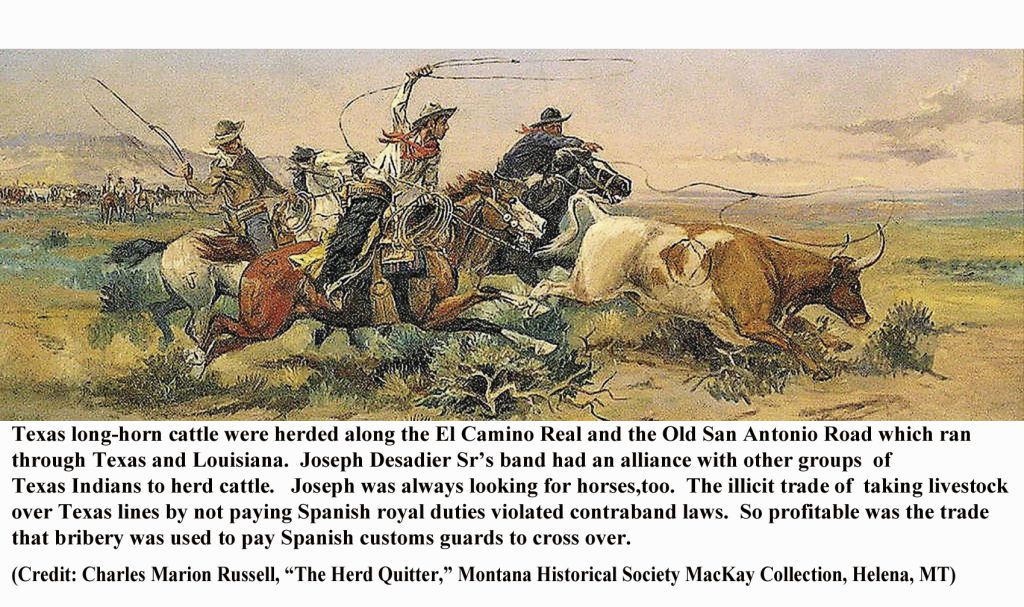
Trading goods with other tribes and Europeans was a way of life with natives. As a young man, Joseph spent most of his life bartering for the family’s goods on the rivers and trails of North America. The most popular trade item Buttes had was salt gathered from the Goldonna salt licks. Goldonna’s clan was/is part of the Butte Tribe bloodline. Joseph and other young tribal braves would travel Saline Bayou to Goldonna, back to the Red River; from there, the band of braves would go south to New Orleans, Mexico, South America, or travel North. Butte Tribe traded for items such as bear grease, flint, rock, etc. These trips could last as long as six months or longer.

When the braves returned, their first stop would be at the temple mound. There they would leave their best gifts and make way to the Butte village. The tribe would celebrate by sitting around fires, smoking pipes, telling stories, singing, dancing, and eating specially prepared foods.
PROTECTING BUTTE’S LAND

Joseph Pareda Desadier was raised on the Louisiana prairie grass and bayou land of Bayou Bourbeaux. His father, Chief White Smoke, moved his people to this land shortly after his birth in 1798. White Smoke controlled the lands and clans in the Bayou Bourbeaux area. The prairie grassland was abundant with thousands of buffalo and wildlife.
The buffalo was significant to the survival of the Indians. Native Americans would only kill enough buffalo to supply their needs. Every part of the buffalo would be used; nothing was wasted.
Since the Louisiana Purchase in 1803, White Smoke knew Orleans Territorial Indian Agent, John Sibley. Sibley’s main job as an agent was to prepare area tribes for governmental land surveys, basically to prepare the United States for a takeover of Native American lands. Sibley assured White Smoke told stories of the “Great White Father’s,” President Thomas Jefferson’s promise that Butte tribal land would be held as sacred land, and the government would not take one acre of their land without White Smoke’s consent.
Having lived and escaped from the Texas Missions, White Smoke had no trust in the words of white men. White Smoke told Joseph the stories of his people. He told him of the dishonesty of white men and the disrespect they held for the indigenous people of America.
As time passed and the government changed leaders, Andrew Jackson became the 7th President of the United States. Jackson wasted no time targeting Native Americans. In his 1829 State of the Union Address, Jackson called for the removal of Native Americans from the southeast to Texas and Oklahoma territories. The Southern states would gain the ill-gotten land that belonged to the natives by forcibly removing the Native Americans West. The Indian Removal Act was signed in 1830 and immediately put into action. All of these oral stories, along with the Indian removal’s atrocities, reached the Butte village. European settlers tried to claim Butte land many times before.

Meanwhile, Joseph and his father were planning and waiting. Plans were to take advantage of their forced mixed-lineage, which included bloodlines from their French and Spanish en-slavers. Until Native Americans were considered an essential part of the human race on American land, Butte tribe members would begin to live as the white men. Their plan was put into action. The family would first assimilate into the white man’s ways. Their secret would lay dormant until the time was right to reveal the bloodline of their people. Now, they would watch and be ready to claim what belonged to their people.
Beware to settlers who dared to claim Butte land!
Contraband Trade: Horses and Cattle Drives

As time passed, white settlers soon found their way to the bayou lands. Oddly enough, there were no white settlers on Butte land. But, the rich land and abundance of wildlife around Natchitoches Parish were too enticing for settlers to resist. Contention between Native Americans and whites were high. The senseless trophy slaughter of buffalo and other wildlife for sport by white men threatened to extinguish necessities of the indigenous people’s lifestyle. By the time of Joseph Sr.’s leadership, large numbers of buffalo began to diminish.
Joseph started a new chapter in the lives of his people. Horses and Texas long-horns were where Joseph’s new interests lie. Joseph would travel anywhere to find the fastest, most stunning horses. He was known far and wide for his outstanding horse flesh of walking and quarter horses.
The contraband market was in high demand of Texas long-horn steers. One steer brought a considerable profit, which was to Joseph’s liking. He, with his band of men, traveled the El Camino Real and Old San Antonio Trail, often returning with hundreds of long-horns to sell or trade on the open contraband market in New Orleans and Mexico.
Red Hawk

A raiding group of Indians led by a warrior named Red Hawk attacked the wife of Chief Powder Face, Joseph Desadier Sr. She took an arrow in her arm, was scalped, and left for dead. Within a short time, Chief Powder Face got word of the attack. Within a short time, he had donned his face paint, saddled up his fastest horse, gathered his raiding party, and hit the trail heading for St. Maurice.
Powder Face knew his enemy, Red Hawk, well. Red Hawk and his men were known for stealing livestock and killing settlers in the surrounding area. The attack on Marie Louise may have been by accident with Red Hawk. He may not have realized who he was attacking until the deed was done. Whatever the case, he had Powder Face to deal with now.
Powder Face, angry and ready to draw blood, caught up with Red Hawk on the trail to Winn Parish near St. Maurice. Powder Face rushed in on the offending band of Indians. As he drew near to Red Hawk, he attacked by leaping from his horse with a sharp war-cry and knocking Red Hawk from his ride. Both warriors hit the ground, quickly jumping to their feet, and drawing their knives for hand-to-hand battle. Powder Face drew blood first by slicing Red Hawk across the face and giving his rival a wicked grin. As was his custom, he backed fair enough away to taunt Red Hawk for his weakness. Red Hawk reached up to touch the deep slash on his face. In anger, he rushed toward Powder Face, who stepped aside, taunting Red Hawk again with a sparkle in his eyes. As Red Hawk turned around, Powder Face went in for the kill. The battle ended quickly with Red Hawk’s bloody scalp dangling from Powder Face’s spear. Powder Face kept that scalp on the end of his spear until the day he died. On that day, Powder Face was buried standing up with his arms folded around his lance adorn by Red Hawk’s scalp.
Marie Louise recovered from the scalping, but her hand became infected, and she eventually loss two fingers.
BUFFALO KILL

Another story that was told by the elders was of Powder Face’s buffalo kill. By the time Joseph Sr. became a young man, few buffalo were left on the bayou prairie. Buffalo brought more than meat into the indigenous people’s existence. Every single part of the buffalo was used and not wasted. Bones were used for weapons, utensils, tools, jewelry, and so much more. Horns, fat, fur, tail, bladder, tendons, dung, hooves, internal organs, all parts were used. In respect for the life of the buffalo, the heart was removed and left on the ground. Native Americans did not take the life of an animal for sport.
The tribe needed to harvest a buffalo. Joseph rode out to the prairie in search of his kill. His destination was “The Lick,” a native-made sand-bank for attracting buffalo. Buffalo liked to roll around in the sand to get rid of biting insects and flies. Hunters could hide in blinds close to the licks and get a buffalo kill quickly and easily.
When Joseph reached the Lick, there were no buffalo in sight. He rode out on the prairie to continue his search. Several hundred yards away was his target. He tapped his horse slightly, and the chase was on.

The buffalo noticed the movement and started to run. Rushing toward the buffalo with his lance held high, Joseph pushed his horse faster.
As he approached the bison’s side, he was so close that he could smell the subtle but distinct smell of the animal, and could mount the animal from his horse. Sitting tall on his horse, Joseph raised his spear and slammed it from an upward position straight down into the buffalo’s body. He hurled the lance in such a way that the spear pierced the buffalo through and through, killing it instantly, and pinned it to the ground. Looking back at his kill as he rode forward, Joseph saw the buffalo lying on the grass, the lance standing straight up with Red Hawk’s scalp blowing in the wind.
JIM BOWIE

Jim Bowie of Alamo fame and his younger brother, Reazin, spent most of their lives in Louisiana. Bowie is historically known as a hero. The truth of the story, as people in Rapides, Winn, and Natchitoches Parish knew, was that Bowie was a con-man, thief, killer, and seller of slaves. His history with Butte Indians began early during White Smoke’s reign as Chief, but Joseph Sr. had a run-in with him one night in the 1830s near the lost San Saba Silver Mines in Texas. Joseph’s band partnered with a small group of Texas/Caddo Indians to round-up long-horns for contraband sell in Louisiana. They were camped down for the night when in the distance they heard horses riding in.

Joseph and his band readied themselves for a fight. Whoever it was, at this time of night, was up to no good. When Bowie’s group neared the camp, Powder Face’s band ambushed them in semi-darkness. Bowie fought Powder Face, aka Joseph Jr., in semi-darkness. In the fight, Joseph sliced Bowie across his arm. As was the way of both, White Smoke and Powder Face, Joseph backed off to return for the kill. In the process of doing so, Bowie and his men ran into the darkness without their horses.
Butte braves circled their animals and camp for the rest of the night. In the early morning, they rose, gathered their property with the additional horses left by Bowie, headed toward Louisiana, and left Bowie and his men on foot to tell their story.
DEATH OF POWDER FACE

Consumer demand for cattle following the Civil War caused a booming contraband market economy. One hot, July day in 1868, Joseph Sr. herded long-horn steers across Saline Bayou to market them at the Mississippi River docks in Concordia Parish, Louisiana. As Joseph moved his horse across the bayou, a long-horn steer broke out from the herd from behind him. The steer’s horn poked his horse’s rump unexpectedly. The steer moved up to incase Joseph and his horse between cattle on all sides.
Joseph’s startled horse jerked, causing Joseph’s saddle to slide slightly to the side where Joseph’s leg got pinned between a steer and the side of the horse. His foot tripped up in his stirrup. Cattle continued to move forward, pulling Joseph down beneath the water, unable to recover his balance and drown.

Chief Powder Face’s final resting place was on Bayou Bourbeaux is about three-quarters of a mile from his Chief Rodger Collum’s present day home. He is buried within walking distance of the future Butte Tribe of Bayou Bourbeaux Cultural Center. Like his father, he was buried with honors, standing up, arms folded, holding his sacred lance. Dangling from that lance was Red Hawk’s dried-out scalp.

BUTTE CHIEF #3 – CHIEF HAWKEYE
JOSEPH DESADIER JR. (1832 – 1906 )
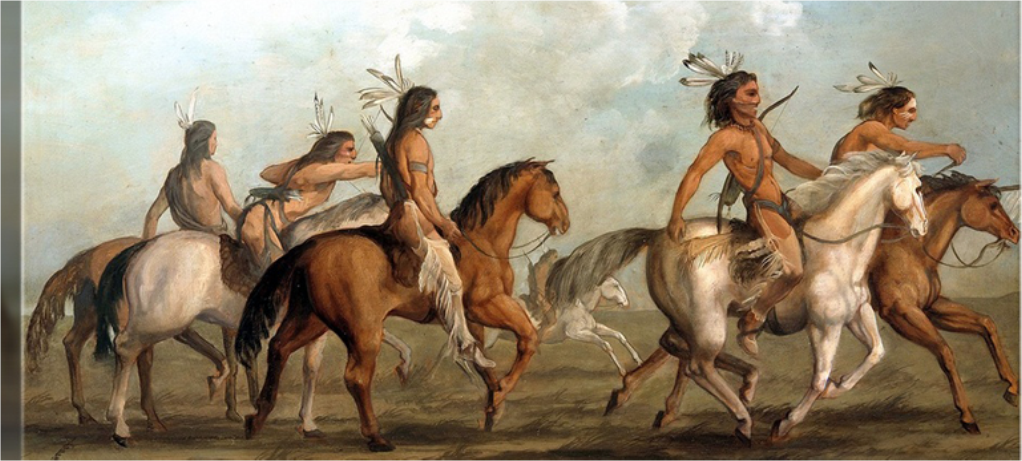
Written by: Belinda Brooks
Oral History by: Chief Rodger Lee Collum
Chief Joseph Desadier Jr., 3rd Chief Hawkeye of the Butte Tribe of Bayou Bourbeaux, was born January 16, 1832, in Bayou Bourbeaux in Natchitoches Parish. His parents were Joseph Desadier Sr., Chief Powder Face, and Ana Louise Perez, both Texas Mission Indians born at the San Fernando Missions and raised in Louisiana on Bayou Bourbeaux.
Of all the Butte chiefs, Joseph Jr.’s life span covered the historical beginnings of Louisiana and Texas within the United States. Less than a year and a half before his birth, President Andrew Jackson signed the Indian Removal Act. The act was in the process of being enforced, and indigenous people were being relocated on Joseph’s birth date. This process was the force leading the pathway made by Joseph Sr. in the struggle of survival for his people. The decision was an easy one, adoption of the white men’s ways. They would live as a family, not a tribe.
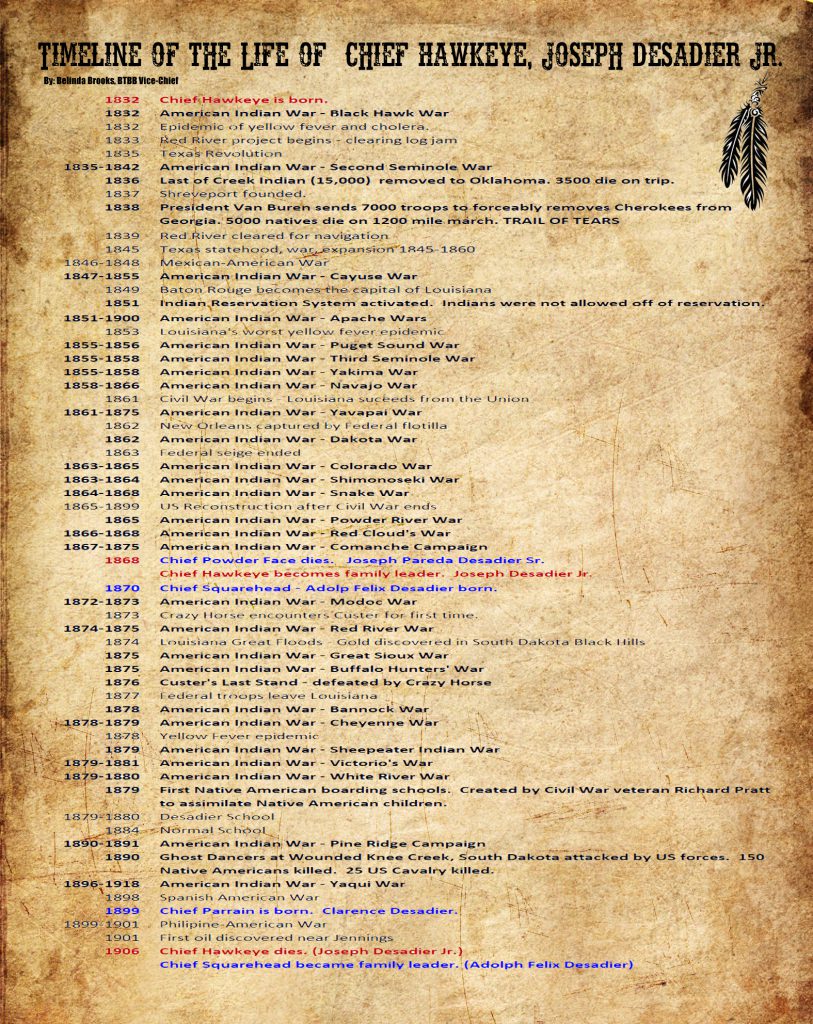
STORIES OF INDIAN REMOVAL, WAR, RECONSTRUCTION AT BAYOU BOURBEAUX
As a child, Joseph sat through meetings with elders. He heard about atrocities dealt to indigenous people forced to leave their homeland and belongings with only the clothes on their backs, in the dead of winter, for a desolate land in the West. Thousands were dying. Some escaped the forced removal to hide in the swamplands of Bayou Bourbeaux.
By the age of 14, the United States waged war on Mexico and annexed Texas Territory as a state. Mexico signed an agreement on the Rio Grande and the Texas borderline. Considering their contraband trade of Texas wild horses and free-range long-horn cattle, this was all good news for Butte Tribe . Mexico would take all that Butte could deliver to the Rio Grande.


One day, out of nowhere, federal troops rode into Bayou Bourbeaux. They rounded up a large part of the community in one location. At that point, eight children were taken from the group. The commanding officer read a letter stating orders by the United States government. A total of eight tribal youth would be required to attend a government boarding school. These indigenous children would be taught to be Americans and returned when their education was complete. The action caused instant rebellious activity within the community. Joseph Jr., as the family leader, was furious! He was taken in chains to the military jail, where he remained for several months. The children were never returned.
At the age of 30, approximately one year after the Civil War began, President Lincoln signed the 1862 Homestead Act. After the war, abolitionists were out for everything that they could steal from all people of color, including Native Americans. Confusion was around every corner where the land was the topic. Land that had been in families for multiple generations was at risk of being stripped from owners by the U. S. government. What belonged to the family had to be protected.
Butte families had to band together to keep as much of their land as possible. The family had its ways. There was one way into the community, and that way was by family consent. Should a person not be wanted nor welcomed in the community, the bayou would be shutdown. What was understood and realized by Joseph Jr. was that there was no one to fight or care for the indigenous people of Bayou Bourbeaux. The family would have to see to itself.
MARRIAGES OF JOSEPH DESADIER JR.

Joseph Jr.’s first wife was Maria Casimira Carmona of Texas Indian bloodline. Not much is known about her. Her ancestors were from Nacogdoches and Los Adaes. She died shortly after her marriage to Joseph and had no children.

Marriage number two is the marriage that created the Butte bloodline. Seraphine Josephine Ann LaRenaudiere was born June 5, 1837, to Charles Phillippe Larenaudiere and Marie Desneiges Denis. According to Chief Rodger Collum, she was the most beautiful of all of the chief’s wives. Known as Josephine, her bloodline was linked to both Texas and Chitimacha Indians of Louisiana.
Josephine was the 2nd great-granddaughter of Marie Theresa De La Grande Terre. Marie Theresa is a documented Chitimacha captive of St. Denis after his French forces raided the Chitimacha village in Mobile in retaliation of the murder of a mission French priest. Marie Theresa married French officer Jacques Guedon and settled in the Bayou Bourbeaux community, where many of their descendants remain today. Twelve children were produced from this marriage. One became the next chief of the Butte Tribe.

Following Josephine’s death in 1884, Joseph Jr. married Lorenza Sauce, who had two children by Joseph. At the age of 70, Joseph Jr.’s fourth wife was Delzina Gallien, 22 years younger than her husband. They had two sons. The youngest son was known as “Goose.” Goose was an interesting character in the tribe’s history. Born in the early 1900s, he never married. An oddity about Goose was that he never wore shoes. During his lifetime, Goose had the title of Keeper of the Mound. The mound referenced here was Butte Hill, which is actually one of the largest mounds in the Natchitoches Parish area. Until recently revealed, few people knew anything about Butte Hill. Each morning, Goose would get up, head out for Butte Hill, spend the day and come home in the afternoon.
FAMILY

Joseph Jr. and his wife, Josephine, were very well-to-do people. Both had Texas Native American bloodlines. For the chiefs’ line, Josephine brought with her the first Chitimacha lineage. Therefore, the mix of bloodlines started here for the chiefs. They owned property throughout the Natchitoches area.
Desadiers and Lonadiers were neighbors. Joseph was five years older than Josephine, which means that as children, they grew up knowing one another. Both Joseph and Josephine were born and raised on Bayou Bourbeaux. Their families were well-to-do people, so the marriage joining the two families was a prosperous one. On the bayou, they owned a two-story home. Josephine had a two-story house on Texas Street in Natchitoches with a large lot. Together, they owned most of the land in Bayou Bourbeaux and land on Red River at Grande Ecore.
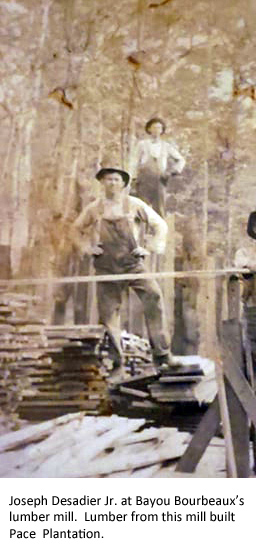
Family was Joseph’s main concern. He employed most of his family to work on his farm and lumber business. Thus, he was responsible for the livelihood of all his families. The main source of income was cotton, cattle, and tobacco. Cattle were free-range long-horns brought in by Butte Indians from Texas and grazed on the prairie lands.
Tribal/family meetings and get-togethers were in private. No matter the era (French, Spanish, or United States), the government was always against Native Americans. Survival of Butte Tribe depended on secrecy. Everything was judged by skin color. To be black-skinned was bad enough, but, according to the United States government, a red-skinned man had no chance of owning land or casting a vote. A red-skinned man was considered an invader in his own homeland. The Butte family must claim another ethnicity or lose everything.
One of Joseph’s greatest interest was his horses. Known for his beautiful paint walking-horses, buyers came from surrounding parishes and states just to look at his stock. Recently, Chief Collum was checking the bloodline of one of his mares. He bought her years ago in South Louisiana to breed with his stud-horse, Rock. When looking at her papers, whose name did he see on her lineage as an owner? Take a guess! None other than his ancestor, Joseph Desadier Jr. Yes, Chief Joseph Jr.’s prize-stock found its way home over one hundred years later.
DESADIER SCHOOL
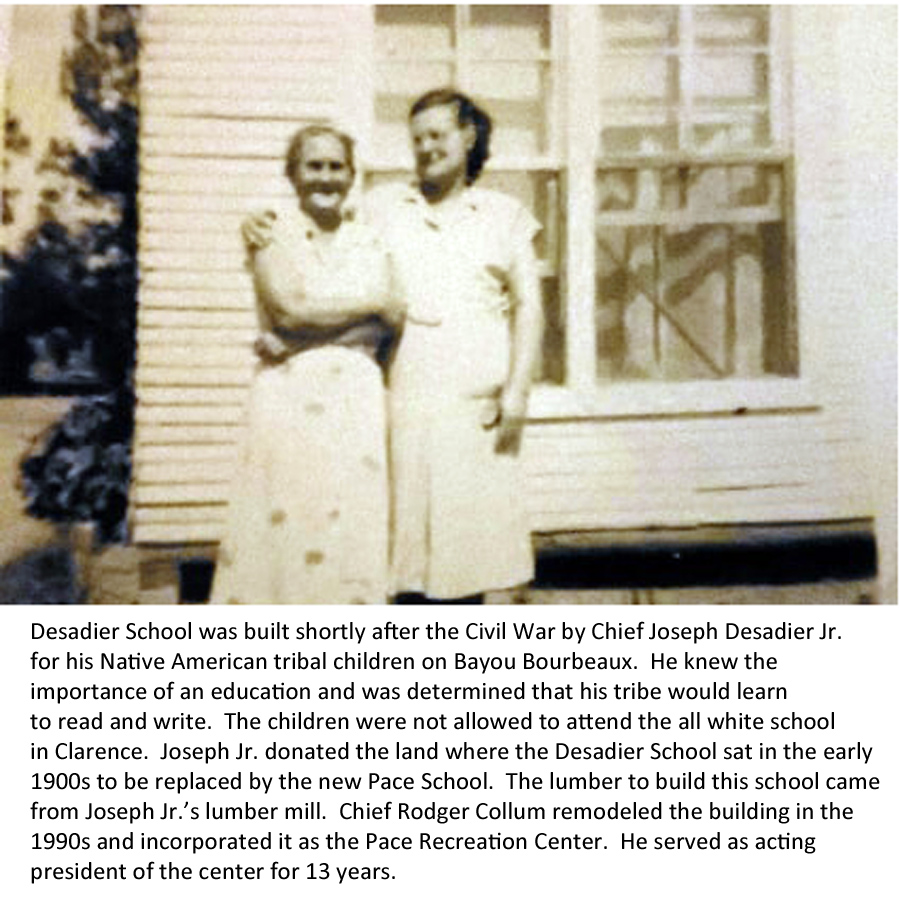

Reading, writing, and ciphering was understood to be a fundamental, non-negotiable part of life for Butte family children. He knew the importance of an education that required signatures. In the South, people of color were not allowed in white schools. Besides that fact, Joseph did not trust white schools to educate Butte children. He would never forget the federal troops riding off with those eight Butte children! They were never returned. Where were they taken? Were they mistreated? Were they even alive? He did not want Butte children away from the bayou or their people. Therefore, in 1870, he built the Desadier School. The Desadier School was the first school built for Native American children in the Bayou Bourbeau community.
BUTTE TRIBE & THE NIGHT RIDERS
The following oral history was given to Chief Rodger Collum by his great-grandmother, Victoria Fee Flores Desadier:
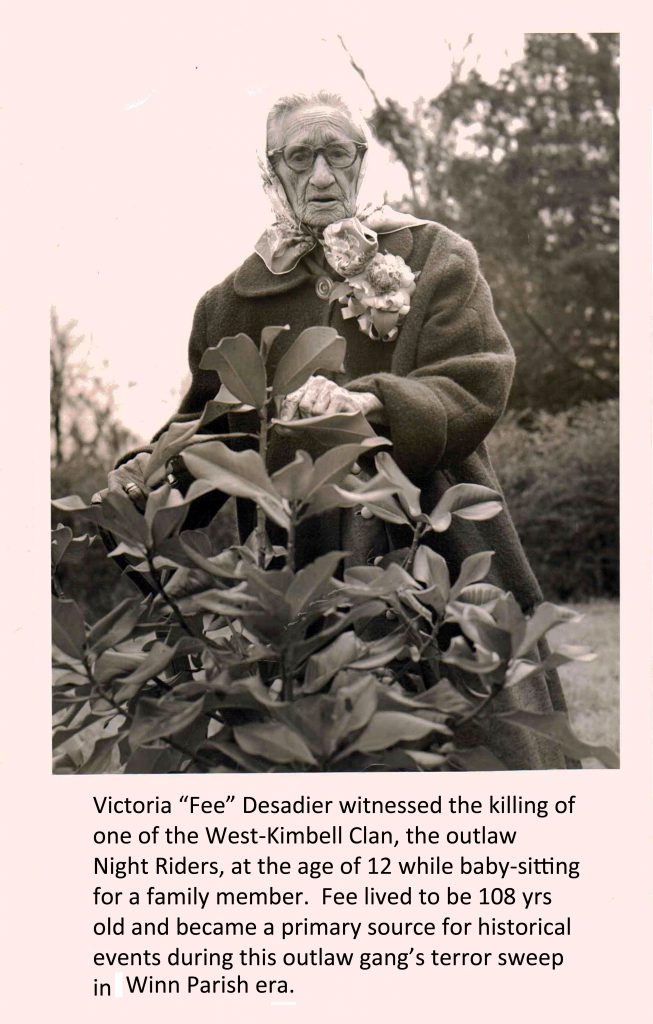
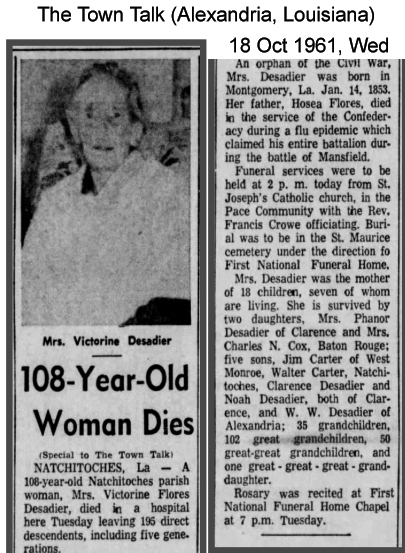
Victoria “Fee” Desadier (1855-1961) was the wife of Chief Adolph Felix Desadier and daughter-in-law of Chief Joseph Desadier Jr. Fee’s father, Joseph Nicholas “Hosea” Flores, was Teja/Texas mixed with Chitimacha Indian, as was her mother. This mix of bloodlines formed the unique, pure bloodline of the Butte Indians. She lived a long life and died at the age of 108.
Fee was interviewed as a primary source by the author of the book The Night Riders. She lived this story and witnessed the actual killing of one of the outlaws by federal troops. The author credited her as the historical visual story-teller about the West-Kimbell Clan, The Night Riders. The Night Riders tells the true story of the West-Kimbrell Clan from the St. Maurice Community in Winn Parish. Her story as it relates to the Butte Tribe goes like this:

Following the Civil War between 1866-1870, the Night Riders, aka the West-Kimbrell Clan, were a local outlaw group from St. Maurice, Louisiana. This group of ruthless murderers slaughtered over 150 settlers traveling through Louisiana to the Texas territory. With the exception of Bayou Bourbeaux’s Butte community, all the surrounding communities had been hit with their vicious, unmerciful butchery of innocent people.
Operations for this malicious outlaw group was structured like a well-oiled machine. It all centered around fast-moving horses. As mentioned, Joseph Jr. had the best stock of horses in the area. The Night Riders were well aware of that fact. Typically, the clan was so feared of by the local community that the clan would just ride up to a settlement and take what they wanted, no questions asked. The issue here was that the horses were not on a settlement. They were on Butte land. No one, including the Kimbrells, wanted to mess with the Butte Tribe.
Running low on fast horse flesh, the clan began feeling the need to make an example of the Buttes. The Kimbrell’s were pretty sure that their family was the strongest, smartest clan around. Their plan was to first approach Joseph Jr. with a bid on his fastest horses. They had no intention of paying for the Butte horses. After the agreement, they would wait for the horses to be herded and pinned up. The night before the agreed pickup date, the Night Riders would raid the pens and be off with the stolen horses. The thieves were not prepared for was what was waiting for them when they arrived on Butte land.
When approached about the sale of the horses, Chief Joseph Jr. wasted no time in turning down the offer. He understood the pattern of the murderous West-Kimbell clan and shutdown the bayou. Groups of family members waited in ambush at every entrance to Butte land.
Insulted by the treatment of the Buttes, the Kimbrells decided they would take the horses anyway. Feeling that they were the superior force, the Night Riders came up the narrow trails in the dead of night. The Butte braves swarmed the Kimbrells and their band of cut-throats like a swarm of bees. The Kimbrells lost a couple of their men and several of their horses in the fight. That was the last visit of the Night Riders to Butte lands until years later when stories of a hidden treasurer began to spread across the bayou.
Here’s a video link to learn more about the Nightriders: https://www.youtube.com/watch?v=9AYTmRoMTHE

KIMBRELL EXECUTION
The year was 1867. Less than three short years before, the Civil War ended. Victoria “Fee” Desadier was 12 years old when the first killing of an actual Kimbrell took place. Fee lived with her parents on a country road not far from the Kimbrell farm.
One sunny morning, Victoria Fee Flores was babysitting for a relative of the Kimbrell clan. The mother of the children was business washing clothes. Fee was sitting on a log outside near the barn watching the children play. She heard the sound of hooves moving in the direction of where she was sitting with the children. The posse of lawmen rode straight by her to the front yard of the cabin, where the mother was scrubbing clothing on her washboard. The lawmen were looking for a Kimbrell. They had been given a message that they would find him in that location.
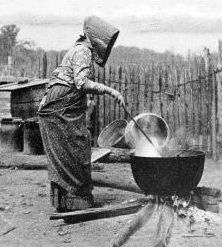
A lady put down her wash. When asked where the man of the house was, she told the lawmen that there was no one at home but her and the children. One of the smaller children had made her way to her mother to see what was going on. She heard her mother say that no one was there. Wanting to help, she yelled out to her mother that her uncle was there. The little girl pointed to the field. “He’s in the field,” she shouted.
The posse turned their attention to the direction that the child had pointed. In the distance, they saw a man running through the fields toward the forest. With a slight twitch of the reins and quick tap to the flanks of the horses, the chase was on. The fugitive was running like a frightened rabbit. The posse circled the field in a matter of minutes, pushing the man to a central location in the field. With guns loaded, the Kimbrell man was riveted with bullets, unmercifully killed execution style.
DUCK BLIND TREASURE

In 1872 the little community of Atlanta, Louisiana, formed a vigilante group to put an end to the Kimbrell clan. The people of the community had been living in fear for too long. It was time to put an end to the blood-thirsty West-Kimbrell gang.
Meantime, word of what was underway made it to the St. Maurice trading post. The owner of the trading post was a man named Williams. Williams was bookkeeper and treasurer of the Night Riders’ evil gains. He had been preparing for this day for years. He knew that the day would come that he would need to make a quick retreat from the area. Time to put his plan into action.
William’s slave, Pad, was alerted to report to the trading post immediately with a horse and wagon. As soon as he arrived, Williams and Pad loaded up the stored treasures. By the time that they finished loading up the wagon, it was full. The horses were pointed in the direction of the Indian Trails of Bayou Bourbeaux. When the wagon approached a certain point on the trail leading to Goldonna, Pad took a sharp right into the wooded bayou. They followed a stream of water until they reached an old duck blind in the middle of the forest. They hid the booty there. Turning the wagon around, they returned to the road that they were traveling on. As they approached the trail, the horses were put in high gear. Their final destination was New Orleans.
About a year or so later, Williams suddenly appeared on the trail again with his wagon. Following the stream that led to the duck blind, he retrieved his treasure. Destination Natchitoches! Years later, Williams owned most of the property in the Natchitoches area.

ACCIDENTAL DEATH OF A CHIEF
On Sunday morning, August 5, 1906, Joseph Jr. rode out to check on his cattle. When he had not returned home later on that day, his son, Felix, went looking for him. Felix found his father lying on the ground in a field next to Bayou Bourbeaux with a broken neck. Joseph Jr.’s horse was standing nearby with his saddle turned sideways. No one knows precisely what caused the fall, but Chief Joseph Desadier Jr. died at the age of 74. Joseph was buried at the Trichell Catholic Church Cemetary in Natchitoches, Louisiana.
BUTTE CHIEF #4 – CHIEF SQUARE HEAD
ADOLPH FELIX DESADIER (1870-1926)
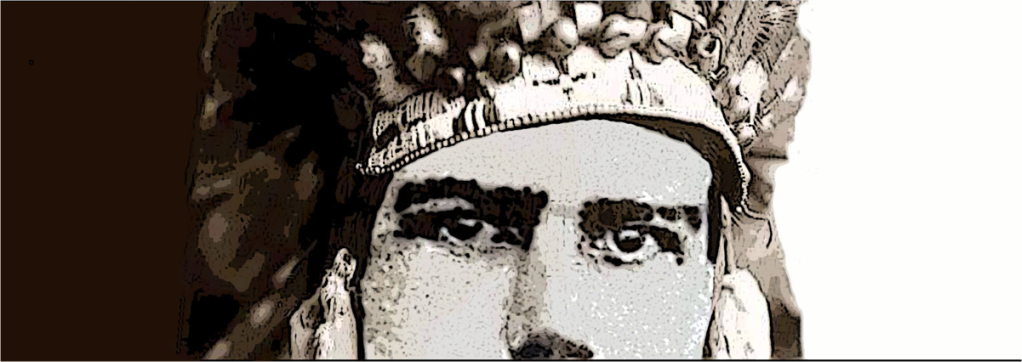
Written by: Belinda Brooks
Oral History by: Chief Rodger Lee Collum

Adolf “Felix” Desadier was the seventh child (third son) of Joseph and Seraphine “Josephine” Ann LaRenaudiere Desadier. He was born on December 5, 1870, in Natchitoches, Louisiana. Felix grew up under the tutorship of his father, Joseph Desadier Jr. Joseph grew up under the Indian Removal Act of 1830 and remembered well the injustices that were poured upon his people.
Therefore, Felix’s generation was born a short time after the Civil War ended in 1864. For the Butte Indians, President Lincoln’s views on Native Americans left them with little hope of basic human rights, much less citizens’ rights within the United States. Lincoln delivered a speech in 1859 at the Illinois College in Jacksonville. His statement left no mistake about his intentions. He stated that the United States “owns a large part of the world, by right of possessing it, and all the rest by right of wanting it, and intending to have it.”
TRIBE TO FAMILY
When it came to survival of the tribe, the main topic of discussion was how to remain invisible in the midst of the Indigenous Holocaust. The views of the United States government had not changed when it came to the indigenous, savage people of America. Therefore, the decision was clear where the Butte Tribe must stand to survive.
The “Butte Tribe” of Bayou Bourbeaux would be known as a Butte “family” by order of Chief Joseph Desadier Jr. The family must assimilate to an accepted culture of the United States, or risk losing everything that had been passed down to the family from their ancestors.
INDIAN TRAILS
Felix Desadier was the last Butte Chief to experience the land of Bayou Bourbeaux in its original formations. The man-made lakes were originally a vast prairie. For hundreds, maybe thousands, of years, buffalo roamed the prairie grasslands.

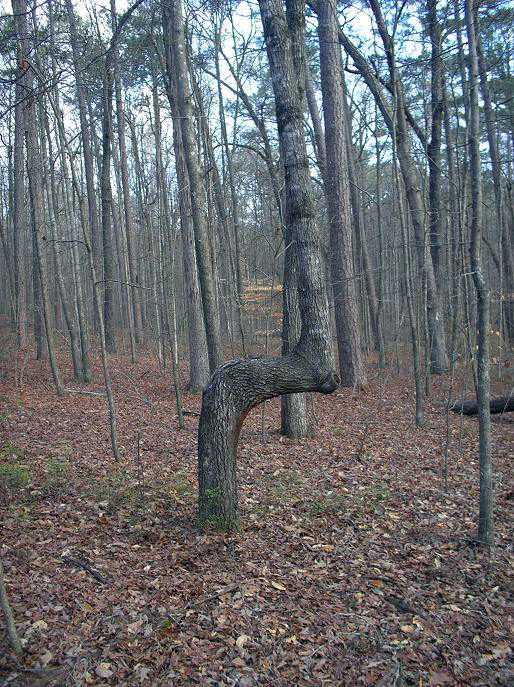
Native American trails throughout Bayou Bourbeaux and bayou streams that led to the Red River were the superhighways for Butte Tribe. The apex of the trails was located at what is known today as Chivery Dam. From that location on Chief Collum’s land, the pathways led in three directions: St. Maurice, Campti, and Goldonna (Salt Licks). Long and winding trails could leave some wandering and confused. Bent trees by native travelers marked the way to sites along the track. The land itself tells the tale.
BUTTE HILL
Land features around Bayou Bourbeaux have great historical significance for Butte Tribe. Butte Hill is located on the Indian trails. The bayou runs along the foot of the hill. Butte Hill is an oddity that few have knowledge of or comprehend in the middle of the flatland bayou. For the Butte Tribe, that is as it should be.
Over two hundred years of silence by the Butte Tribe has protected the guarded secret of Butte Hill. On his arrival in the late 1700s, White Smoke found the sacred mound and became its caretaker. He and his wife, White Smoke and Two Moons, are buried on its summit.
BUTTE MOUNDS
Butte territory was a hot-spot for indigenous travel across America. Before entering the Butte village, visitors would stop at the apex of the trail. There in the center of everything, within 25 feet, of Chief Collum’s front door is the Sacred Temple Mound. It made sense that the trails would lead to the straight to the temple mound. There visiting natives would first go to the temple mound, pray and leave their gift, then visit the village.
After the temple mound was located, Chief Collum visited one of the elders in the community who was in his 90s. This elderly man lived his entire life on the bayou. He told the chief that his grandfather had made a map of all the native mounds in the area. What was even better than that, this elderly man had possession of the map. He went to a cabinet and pulled the map out to show to Chief Collum. The mound was marked at Chivery Dam and labeled a temple mound. There were several other mounds labeled on the piece of paper. The elderly man was a recluse. He kept to himself and spoke to very few people. In fact, the chief was one of only two men that he gave the time of day. He did not offer the map to the Chief Collum, but he allowed the chief to make a sketch of the map.
Chief Collum does not share all his information on the mounds in respect for the landowners’ privacy. He has, as well, concern for the possible and likely disturbance of the mounds. Landowners honor and consult Collum on worries. Meanwhile, visitors are rerouted to the chief for his approval to visit Butte mound.
BUFFALO LICK

Down the trail, at the edge of Prairie Lake, an unusual landform can be found. Prairie Lake now stands where grazing prairie grass once laid. On the edge of the prairie were mounds of blinding-white sand. Very unusual sight! Where did the sand come from?
Hundreds of years before European explorers landed on the gulf shores of Louisiana, buffalo roamed and grazed on the prairie grass. Buffalo were constantly being attacked with all types of biting insects and flys. Indians realized that buffalo loved to roll around in the sand to rid themselves of the pesky biting insects. Local natives knew of nearby hills that were topped with white sand. Their plan was to lore the buffalo to the sand dunes, making it easy for them to hunt.






These sand dunes were called “The Licks.” Today, hundreds of years after the land has been covered by Prairie Lake, one can still glimpse the remains of “The Lick’s” sand. Indigenous artifacts can still be found in the sand, proving that natives hunted buffalo were hunted there.
Recently, Louisiana State Senator Gerald Long, whose family has been long time friends of Chiefs Clarence Desadier and Rodger Collum, requested to visit Butte lands. He was especially interested in visiting the Lick and Butte Hill after reading about it in the Butte Tribe history published by the Natchitoches Times, the leading newspaper in Natchitoches Parish.

JEWEL SPRINGS
A magical spring is hiding down the trail. Along with the Indian Trail, Butte Hill and the Licks, is Jewel Springs. Jewel Springs was considered a mystic, healing springs. All of the Butte chiefs used the spring for healing purposes. Family picnics at Jewel Springs were exciting times for the children. In the heat of the day, the cool water and the shading of the trees provided the family with a fun get-away from the previous week’s work in the scorching heat.
As mentioned, natives believed that Jewel Springs was a healing spring. Family visited the springs to bathe in the healing waters in hopes of washing away disease, healing wounds, erasing mental issues, or other such things. Chief Felix Desadier was carried to the springs three times after his accident that eventually took his life. Chief Collum went to the springs several times when he needed healing.
HUNTER, TRACKER, GUIDE
It was no secret that Felix was an avid hunter, tracker, and guide. He loved nature and animals. His love for animals was evident by his beautiful herd of horses. He rode a giant 16.5 hands white horse.

Chief Collum was told a story by his elders about Felix at twelve years old. For several weeks Felix and his father had been finding dead calves scattered around the farmland. There was obviously a rogue-cat on the loose thrill-killing helpless animals. Normal big-cat kills would consist of making a kill, eating whatever the cat wanted of the kill, dragging what was left over to a safe place, covering the left-overs with grass or other such objects, and returning to eat the remains at another time until it was all consumed. This cat killed calves, ate what he wanted, and left the remains to the other predators. Felix’s tracking skills were excellent. By now, Felix knew the cat was obviously a rouge-panther. With his father’s permission, he headed out on the trails with full intentions of returning home with the pelt of the offending cat.
Felix tracked the cat for three days and nights. On the late morning of the third day, he found the cat lying in a den of branches, straw, and grass. The panther was sleeping and didn’t realize an intruder had found his lair. Felix’s aimed and shot. The shot found its mark. Felix made it home that day with his trophy cat to the excitement and relief of his parents.
MARRIAGE
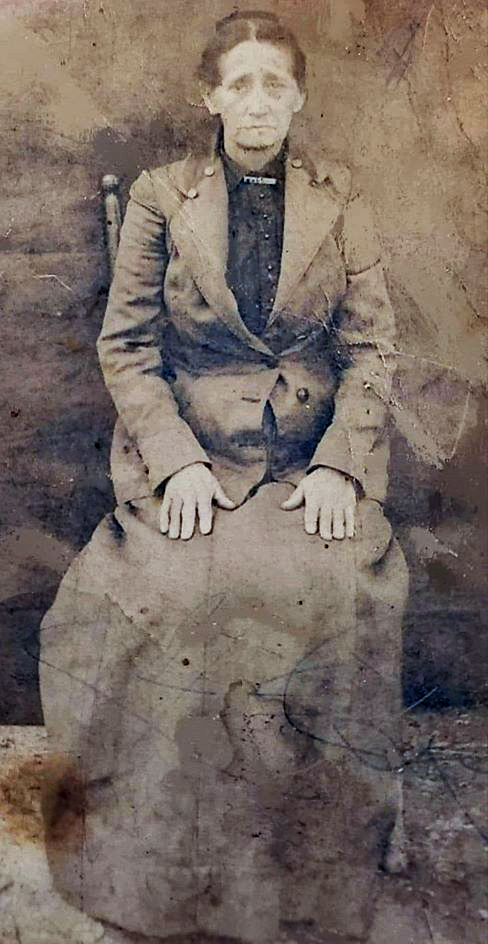
Felix was married twice. His first wife was Theresa Thompson. Not much is known about Theresa. She and Felix had one son born in 1895. She must have died early in life, but no other record of her life or death has been found at this time.
The following year, 1896, Felix married his second wife, Victorine “Fee” Flores. Fee was his lifelong companion. Born 15 years before Felix, she was widowed by her first husband, William Carter. She had seven children by Carter.
Familial relationships were common among Native American families. Felix and Fee were second cousins. Felix was the first cousin of Elizabeth Larenaudier, who was Fee’s mother. This marriage produced four sons and one daughter. Their first son, Clarence, became the next leader of the Butte family.
DESADIER SCHOOL
Felix was a wealthy man. Although it is not precisely known where his wealth came from, it is highly likely that he may have been involved in contraband cattle trade activities. Felix and Fee lived a life of servitude to their family and their community throughout their marriage. They knew and understood too well what being tagged “Indian” meant in the United States. Family came first with them. Obviously, their skin tone was not white. Family children were not allowed in the “white” schools. Knowing that would be an issue with the segregated school systems, Felix’s father, Joseph Jr., had prepared for that when Felix was a child. Joseph had built the first school for the family children on the bayou, the Desadier School. During Joseph’s childhood, eight children were taken from the tribe to be taught American ways. They were never returned to their family. Butte families would always remember the children that never returned. The family would always be careful, be prepared, be watching.
Felix attended Desadier School. By 1905, the schoolhouse was in a dilapidated state. A local school was a must to family, especially Felix. He did not trust the government with the care of the family children. As the family leader, he was instrumental in the construction of a new school.
LIFE AND GEESE ON THE BAYOU
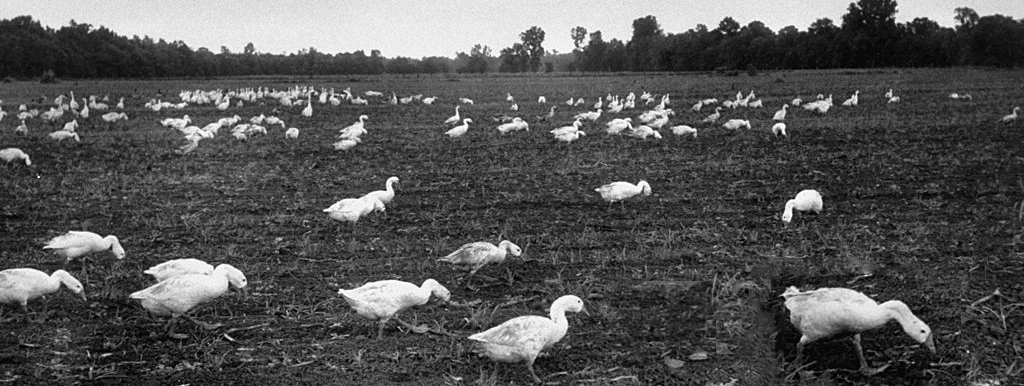

Everyday tribal life continued as usual, regardless of whether one called the group a family or a tribe. Felix had the responsibility of feeding a large number of family units. Everyone beginning at 5 to 6 years of age worked to do their part to keep the family alive and well. Each morning before going to school, Felix’s children would milk the cows and do chores. In the summertime, all the children had to work in the fields and take care of the livestock. All of the grandchildren milked cows. The tribe and community were allowed to gather milk in Felix’s barns whenever needed.
Felix was known as a specialized farmer in his era. After the Civil War, slave labor was no longer allowed. Cotton was still king in the South. Farmers had to improvise, and things like fighting Johnson-grass in cotton fields was a major concern. As a child, Felix raised geese that would follow him around the yard, plucking Johnson-grass right out from under his feet. That memory gave him an idea! He began raising geese.
It was a rather comical sight, a wagonload of 200 geese traveling to the Butte cottonfields. Work hands drove to the cotton fields and unloaded them there. The geese went right to work, waddling down the cotton rows and plucking Johnson-grass. At the end of the day, the geese were herded back into the wagon and taken home to roost.
NATCHITOCHES MARKETS
Common knowledge on the bayou was the love that Felix had for his orchard. His orchards were a hobby for him that he took much pride in. Bottle wine from his farm was a favorite at the Natchitoches markets.

Each month the family gathered to travel to the Natchitoches markets. They would travel the trail to the river. From there, they would board the ferry to take them across the river to Grand Ecore. At the market, they sold various Butte products such as garden crops, cotton, tobacco, and salt. Jewel Springs bottled water was sold for its mystical healing properties.
BANISHMENT AND MURDER ON THE BAYOU
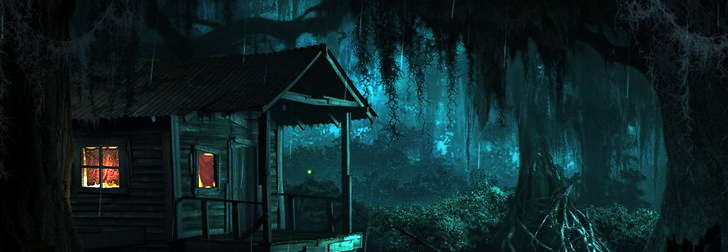
As families often do, disagreements happen, families split. The Butte family was no exception. Chief Powder Face, Joseph Desadario Pereda, was the first Butte chief to banish a son from his immediate family. His son, Philoseme, was an alcoholic and would not work. Instead, he would drink all night and sleep all day. He could not be trusted to show up for work, which caused hard feelings for others who had to do their job and pick up his slack.
One day, Philoseme showed up late for work. There was important work to be done that day. His brother, Joseph Jr., was trying to meet a deadline and was upset with Philoseme’s lack of work ethics. One thing led to another, and the brothers began fighting. Their father rode up in the middle of the fight. Chief Powder Face did not have to be told what the fight was about. He knew both of his sons well. Philoseme had been warned more than once, and his father had enough. He was banned from his father’s land that day, which meant that we must leave and never return. He was no longer considered a part of the Butte Tribe. Philoseme moved to the Black Lake Community. He married and raised his family there, never to return to Butte land.

Years later, on July 5, 1905, Ozan Desadier, son of Philoseme, was at home with his family at Black Lake. On that night, Ozan heard someone calling for help at his front yard gate. When he got to the door, the man pleaded for a light. Ozan rushed into the house and hurried to the porch with a pine-splinter. Unbeknown to Ozan, he was being ambushed. Two other men, one on each side of his porch, were standing in the darkness, waiting for him to appear on the porch. As Ozan stepped out unto the middle of the porch, one man drew a shotgun and killed him on the spot.
As would be expected, word traveled fast on the bayou. Murder on the bayou was not an ordinary happening. The description of the men at Ozan’s sounded familiar to Felix. A man was riding around, attempting to buy land for pennies on the dollar. He visited Felix’s place the day before for that purpose, riding a mule. Felix knew for the men to escape, they would have to cross the river to Grande Ecore. That meant that they would have to travel the Indian Trail to get there. He headed out for a good trap spot and waited patiently for the sound of huffs heading toward the river.

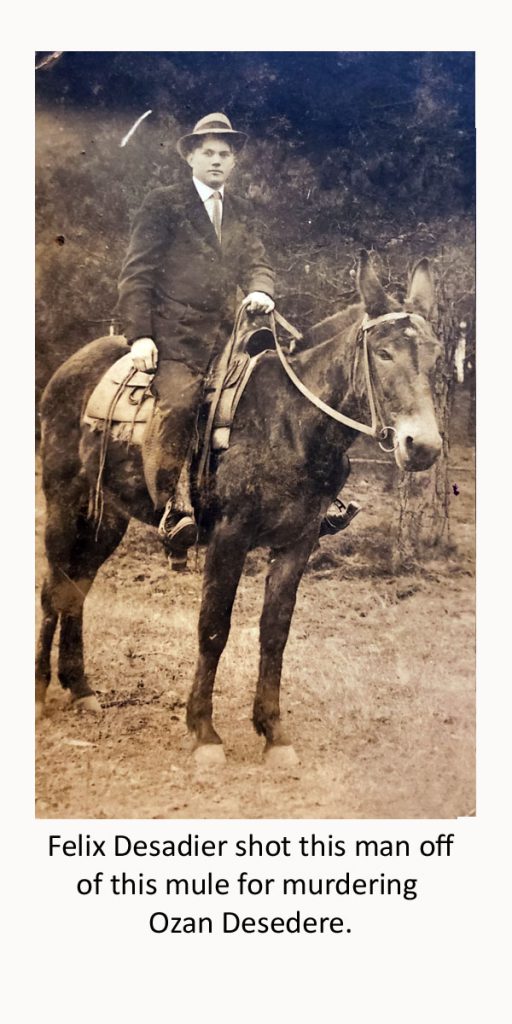
Before long, Felix heard someone coming. Not sure of who it might be, he waited until he could see the rider before taking action. It was the same man that Felix had met the day before on the mule, wearing the same clothes. Felix aimed his double-barrel shotgun. When the mule got to the right spot, Felix stepped out of hiding and pulled the trigger. The pellets from the shot splattered the outlaw as he was thrown from the mule. It didn’t kill him. He jumped to his feet and ran into the darkness. Felix was satisfied that his shot severely injured the escapee. He would need treatment for his injuries soon. Felix made his way home with the mule and called it a night.
In those days, a person charged and convicted of a cold-blooded murder would receive a death sentence, or at the very least, a life sentence in prison. Two of the three men were caught that night and taken to jail in Natchitoches. Several months later, they were tried and served a very light sentence for the crime that they committed. The sentencing was no surprise for people of color with no right to vote much less with no right to serve on a jury. Ozan was a man of color.
As for the man shot by Felix, reports arrived that he made it to Texas and died three weeks later from gunshot wounds.
CHURCH
Giving honor to the Creator of heaven and earth has always been a priority to Butte leaders. Each chief had his own personal belief system. As honorable men, they encouraged their people to reverence God for His many blessings.
Spiritual stories of the Butte Tribe begin with the first chief, White Smoke. White Smoke always gave thanks to the Great Spirit before and after life events such as hunting expeditions, battle, and ceremonial activities. At his death, he was buried on Butte Hill mound, standing while holding his sacred pipe.
Butte Tribe’s sacred temple mound stands within twenty-five feet of Chief Collum’s home. The chief was told stories of the older days when Native Americans traveled the trails of America. As visiting natives would approach a village, they would first make way to the tribal temple mound. While there, they would pray and leave gifts to the Great Spirit. After the ritual of honoring the Great Spirit, they walked to the nearby village, where they were welcomed by the native people who lived there.
As the years passed and chiefs changed, religion began to define the Butte families. Chief Hawkeye’s, Joseph Jr.’s, family worshipped in the Catholic Church in the Trichell Community on Bayou Bourbeaux. He is buried in the cemetery there behind the church.

Chief Squarehead and his wife, Felix and Fee, started their own Protestant Church in 1909. It began with a brush arbor on land that they owned in the Pace Community on Bayou Bourbeaux. Before long, a building arose in place of the brush arbor, and the little church became the central bayou church. The church and parsonage land was donated by Felix, Fee, and Clarence Desadier. Harmony Christian Baptist Church holds generations of memories for Butte families. The church celebrated its 130th Homecoming Celebration in 2019. All Butte Chiefs since the church’s founding have served as board members. Chief Clarence Desadier served as pastor.
DEATH OF A GREAT CHIEF
One of Felix’s greatest joys and ways of relaxation, was spending time in his orchards. The upkeep on the orchard was extensive, but Felix enjoyed managing that upkeep himself. He grew the finest fruits in the area. Wines from his winery were in great demand. Fee drank wine every evening before bedtime.
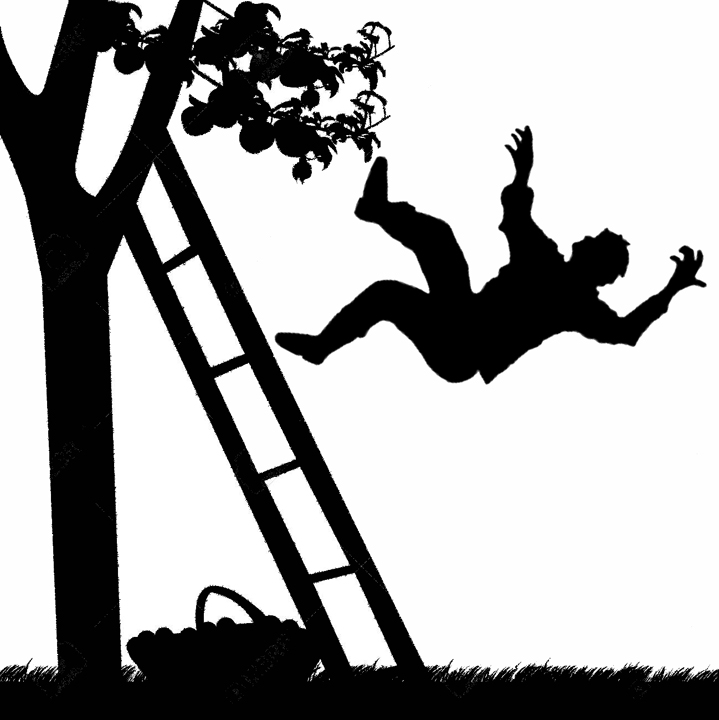
One day, Felix and his helpers were working in his orchards. It was time to prune branches to prepare for new growth. The pear trees had been significantly damaged by the previous winter weather. Felix used a ladder to reach the first sturdy branch of a large pear tree in the middle of the orchard. He braced himself and reached for a half-splintered branch above his head. Suddenly, Felix heard a crack from the branch that he was standing on and lost his balance. He fell straight on his back on a large boulder beneath the tree.
The injury that Felix suffered from that fall damaged his spline. It caused much pain and suffering. The family carried him three times to Jewel Springs to bathe in the healing waters. Nothing helped. For the rest of his life, he was bedridden. Chief Adolf Felix Desadier was cut short at the age of 56 on December 26, 1926. He left his son, Chief Clarence Desadier, to carry on and lead the family.

BUTTE CHIEF #5 – CHIEF PARRAIN
CLARENCE DESADIER (1899-1969)

by: Belinda Brooks
Oral History shared by: Rodger Collum & Buddy Hayes
Chief Parrain, Clarence Desadier, was born on March 19, 1899. He was the second son of Adolf Felix and Victorine “Fee” Flores Desadier. Of all Felix and Fee’s children, Clarence was the most dependable. His love and willingness to sacrifice himself for the care and safety of his family, as well as his ability to manage business affairs, made him the obvious choice as chief/leader of the Butte family.
For Clarence, his service as acting chief began several years before his father’s death. His father, Felix, was involved in an accident that left him bedridden and in constant pain. Therefore, Clarence, with the assistance of his mother, Fee, took care of Felix and the family business. He made his home next door to his parents where he could easily see to their well-being.
FAMILIAL LIFESTYLE
In true Native American culture, everything relates to family ties, family first! Thoughts of survival, keeping the family together and the bloodline flowing were always foremost in the minds of the tribe leader. Butte Tribe was no exception.

Therefore, it was no surprise when Clarence Desadier found his wife and life partner within his tribe. Clarence married his second cousin, Louella Waters, on November 17, 1917. Their Larenaudiere grandmothers, Seraphine Josephine & Marie Zelina, were sisters. The sisters were the second-great granddaughters of Marie Theresa De La Grande Terre, the Chitimacha wife of Frenchman Jacques (dit Nantes) Guedon.
Together, Clarence and Louella raised three sons and four daughters on the same land that the present-day chief, Rodger Collum, has resided his entire life. When it came time to choose a successor as chief, Clarence’s choice was not one of his children. He chose his grandson, the son of his daughter, Olla Mae. Proof positive, the Butte chief position was determined by the spirit man rather than a birth line.
FLOODS, DEPRESSION, AND WAR
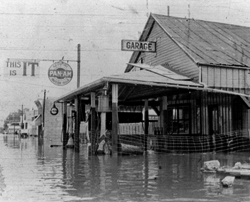
Undoubtedly, the late 1920s and 1930s were hard times for those raising families in and around Bayou Bourbeaux as well as the entire United States. 1927 brought the historic Mississippi River flood. Floodwaters in Louisiana displaced many of the Butte Tribe families who relocated their families closer to the Mississippi River to make better lives for their families. October 1929 marked the month of the Wallstreet Crash and the onset of the Great Depression. Then, in 1939, shortly after the economy began to recover, World War II began. Young men within the family were stripped away from their families to serve their country on foreign shores. Clarence had two sons, Otis and Henry, who served during WWII. They were not the only Butter family members serving.
Clarence, known and loved by his people as Parrain (Godfather), was concerned for his people. As head of the family, it was his responsibility to see that the family was taken care of. Truck patches were prepared each year for any family or community member to gather food from. Parrain’s milk cows were available each morning for those who needed milk for their family. Clarence made sure that family had jobs to go to, food on the table, beds to sleep in, and roofs over their heads.
Through it all, Clarence was careful to keep the family bloodline under-the-radar. Why? His grandfather, Joseph Desadier Jr., lived through the 1830s Indian Removal Act. Joseph lived through and knew only too well the discrimination, hatred, and disrespect that the United States government held for the indigenous people of America. The “tribe” became a “family.” No longer would the Butte Tribe acknowledge their Native American bloodlines. White settlers were determined to claim the rich, alluvial lands of the Native Americans. The government had no concern for the forceable removal of indigenous people from their homeland to ghost lands of the West. To keep families in place and Butte lands safe, it was necessary to take on a new cultural identity. One day, the Butte family would be free to acknowledge their tribal bloodline without retribution.
LIFE OF THE “PARRAIN”

Clarence was known as Parrain by the family. Respect was not asked for. His people agreed, Parrain earned it. His approval was requested by the family for anything of importance. He was Godfather to more newborns than could be counted. Couples would visit him for permission to marry. Family disputes would be quickly settled by his word. Accidents, casualties, deaths, Parrain was the first one called and the first one on the scene.
Clarence’s mother, Fee, lived to be 108 years old. At her death, all of her assets were left to Clarence to distribute. Fee trusted her son to do what was right with her belongings. His decision on the distribution of her property was based on the work ethics of his siblings. Clarence kept the family tightly knitted by working together as family leader.
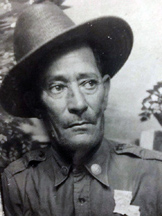
As a farmer and a cattleman, Parrain worked any family member that needed a job. During his lifetime, he held other jobs that he had deep-seeded concern for. He worked as a deputy sheriff, a federal game warden, and a preacher for the family church founded by his family at the beginning of the century.
As a Native American, Clarence was concerned about the preservation of wildlife on Bayou Bourbeaux. Times were hard. The Butte family’s survival had depended on this wildlife for centuries. Bayou Bourbeaux and the surrounding area was now known as a sportsman’s paradise. Outsiders were coming into local hunting ground and killing for sport. Therefore, Clarence became a federal wildlife game warden.
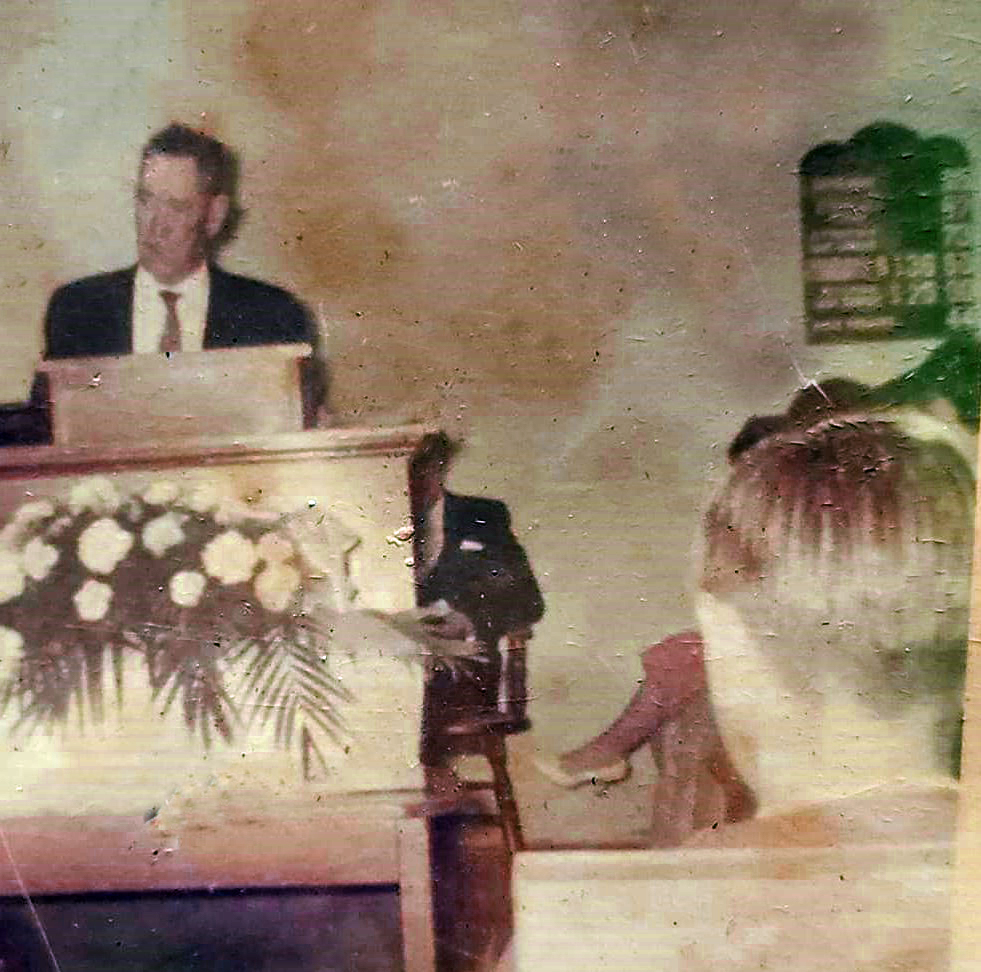
Spirituality/religion has always been a significant factor in the lives of the Butte families. For Clarence, this was undoubtedly true. Throughout his lifetime, he, along with his parents, played founding roles in the building of the Christian Harmony Baptist Church in the Pace Community. The land that the church and parsonage sit on today was donated by Felix, Fee, and Clarence Desadier. History of the little church began in the early 1900s. Felix, Clarence, as well as many other family members have served as deacons throughout its lifespan. Hundreds of family members were christened, baptized, and buried there. The church recently celebrated its 130th birthday celebration.
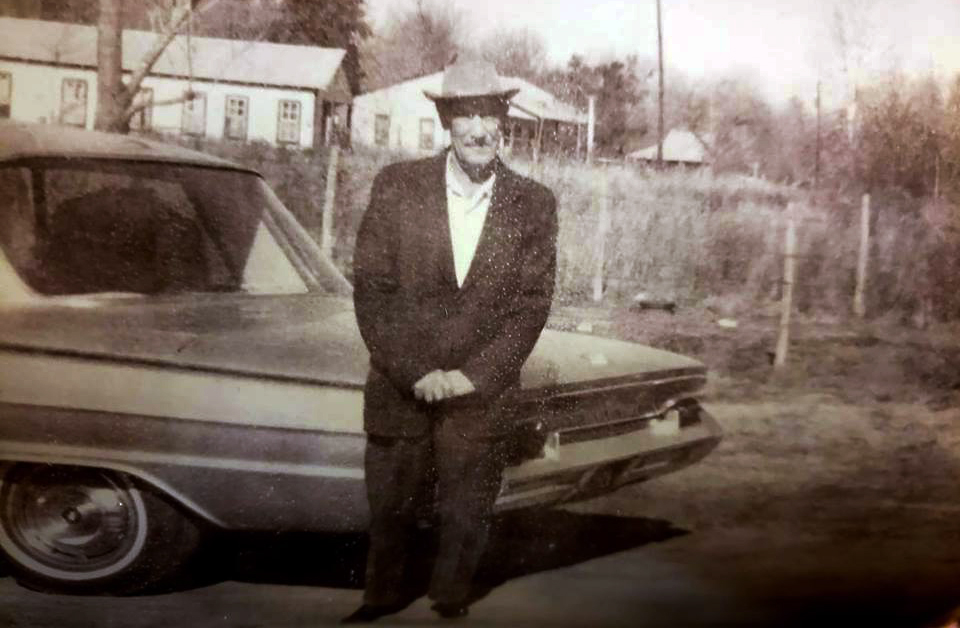
Clarence and Louella lived their lives during the beginnings of the Industrial Revolution in the United States. For them, they enjoyed all of the new modernized inventions. It would be accurate to say that in the Bayou Bourbeaux area, they enjoyed the first of all that the new inventions that technology had to offer. They were first to have a phone, a tractor, as well as a car with an air conditioner and automatic transmission. They were also the first to purchase a television.
FAMILY GATHERINGS


Saturdays and Sundays were always times for family gatherings. Grandma Fee, Clarence’s mother, always lived within walking distance of her son’s home. Her children were raised to understand the importance of family togetherness and taking care of elders.
Saturdays were visiting days. Near and far families would travel to sit around the yard, under trees, and on the porch to watch children play, hear old-people tell stories about the good ole’ days, drink coffee or sweet tea, and enjoy fresh-baked teacakes. Saturday gatherings were no less than 20 to 30 family members passing by. When the evening came, someone would likely break out a fiddle. It was time for music and dance.
Sundays were always spent in church, no exception. Everyone would bring pot-luck dishes to Parrain’s. There was always more than enough food to share with all who attended. At times, upward of 100 people would come to “Paw” Clarence and “Maw” Louella’s house for Sunday dinner. The norm would be 50-60 people after church for lunch.
There was a pecking order to seating at meals. Elders were seated and served first, followed by the rest of the family. Teaching children to respect their elders was and continues to be a major responsibility passed on by adults of the Butte Tribe.
Comically, Chief Collum likes to remind his people how “special” he was to the elders, or at least to his mom, Olla Mae, and Maw Louella. On Sunday just for him, they always made his favorite banana pudding (without bananas.) Knowing that Rodger had to wait in line with the children, Olla Mae and Louella had a special place set aside for his bowl of banana pudding.
MEETING OF ELDERS
Each month, Clarence would call a meeting of family elders. These meetings were rather traditional in their schedule. About 20 elders would be in attendance. Clarence always opened the meeting with prayer. Coffee, tea, Kool-Aid, and teacakes were served. After taking the time to greet everyone, the group would then sing old family, tribal songs. Money would be collected for those families who may be having hard times and in need.
Storytellers would tell stories about life when they were children. They would relate to Rodger traditions and customs of their lifetime. The elders would talk about the importance of hunting and fishing on Bayou Bourbeaux. Many within the tribe were hunting and fishing guides in Natchitoches Parish. Without the plentiful supply of wildlife, the family would have never made it through the Great Depression’s hard times in the 1930s. For Clarence and the elders, controlling and protecting Butte lands depended on keeping outsiders away from their land.
MAW LOUELLA

Fond, humorous memories of Clarence and Louella Desadier told by their grandchildren are numerous. Clarence’s children all lived in the surrounding area. Each evening, he and Louella would ride around to check on his daughters and their families before they went to bed.
All the family knew that Maw Louella liked her beer, especially when she went riding. This created an issue for Paw Clarence since he was a preacher man. Rodger and his cousin, Buddy Hayes, laugh when they tell the story about riding with their grandparents. Clarence would drive up to the local “beer” stop and park in the dark. Someone from inside would walk outside with a brown paper bag containing Maw Louella’s favorite drink. Clarence would pay for it and be on their way.

Rodger always speaks of Maw Louella with a smile on his face. He would go to her first, whenever he wanted something that he felt his Paw or parents would deny him. Maw was always up to the challenge of making deals with him. He and his cousin-in-crime, Buddy Hayes, loved to go hunting beginning at the early age of five and six years. Others may have objected, but with Maw on their side, they pretty much knew, without a doubt, it was a done deal. Maw Louella always liked to cook rabbit. The boys had guns, but ammo was hard to come by. Maw would get the boys shells if they hunted rabbits for supper.
Now, you might think, what was the big deal about getting shells? The big deal was that Paw Clarence was a Federal Wildlife and Fisheries Agent. The boys were too young to hunt on their own. They would have to go hunting behind their grandfather’s back. Having rabbit for supper would bring questions from Paw about where did the rabbits come from?
So, Paw would confront Maw. In her slow, Southern drawl, Louella would respond, “Now, Clar…ence, you know you enjoy eatin’ them rabbits.” That was it! No more was said about the boys hunting or Louella passing out the shells. Louella always had the say-so when it came to the pots and pans.

Buddy told the story that on a cold winter da, Maw decided that she wanted to cook geese for the family. The boys were around the ages of eight and nine at the time. She gave them a box of shells with the initial “HV” on them. What were they to do? If Maw said to do it, they had no choice. They eagerly headed out with the dogs to the bayou waters to find the biggest, badest, fattest goose to deck Maw’s Sunday table.

Suddenly, Buddy spied a gigantic goose that seemed hundreds of yards away. He pointed it out to Rodger and said, “We’re too far away for you to hit it.” Rodger said, “No, man! Give me one of those HIGH VOLTAGE shells Maw got us.” Buddy gave him the shell and, sure enough, that goose was as good as cooked. Rodger killed it on the spot. Buddy said, “Wow, Rodger! Never heard of those HIGH VOLTAGE shells. Maw needs to get us a bunch of them.”
EARL LONG & BLAZE STARR

One afternoon, Paw Parrain and Maw Louella were sitting outside under a big oak tree when a big, fancy Cadillac, chauffeured car drove into their front yard. Paw Clarence knew immediately who it was. The back door of the vehicle swung open and out popped, none other than Paw’s life-long friend, Governor Earl K. Long. Earl lifted his hand in greeting and then bent down, reaching into the back seat of the car to grab something. Next thing that Paw and Maw saw was a pair of red-spiked heels touch the ground beneath the opened door of the Cadillac.
What a sight she was! Blaze Starr, Earl’s burlesque queen. Everything about her was blazing red-hot from the top of her burning, auburn hair to her ruby red lips, all the way down to those scarlet stilettos heels. She traveled with Earl to the sale barn to look at prize hogs. On the way, they stopped to visit the preacher man, Clarence Desadier, and his outspoken wife, Louella.
Clarence pulled up a couple of chairs as Maw Louella stood up and headed toward the house to get coffee and tea-cakes for their guest. As she walked away, you could hear her say, “Come help me, Earl.” Earl followed her to the kitchen.
In the kitchen, Louella told Earl in her long, drawn-out southern drawl, “Now, Earl, what you doing with that floozy? She’s half your age. You know better than that! You need to get you a good church-going woman and get married.”
Earl looked at Louella with a quirky little grin and a twinkle in his eye, “Louella, I like my women wild and crazy.”
Louella turned and poured the coffee with a chuckle.
BAYOU SHUTDOWN
On a more serious note, there were times that the Parrain, as head of the family, had to shut the bayou down. Friday, December 6, 1957, Kenneth Wayne Frederick, Clarence’s grandson, left Clarence’s house with two dogs to go rabbit hunting. When the dogs returned without the grandson, Clarence called in the family, shut down the bayou, and the search was on.
The Town Talk newspaper of Alexandria, Louisiana, reported that, “It was the grandfather who traced the boy’s footprints from near the Pikes home for about 2,000 feet until they faded out into the swamp.”
Bayou Bourbeaux was shut down for approximately two weeks. No one entered or left the bayou unless they were family or part of the search party until Clarence’s grandson was found. The body was found partially submerged in the bayou under a Bayou Bourbeaux bridge near the Clarence community on December 18, 1957. The death was ruled as drowning.
TORNADO ON THE BAYOU
Years before that accident, another Bayou Bourbeaux crisis occurred when a tornado came through the bayou. A midwife who lived on the bayou was standing in her front yard, holding her baby. The baby was not old enough to sit up by itself at the time.
Suddenly, a big wind sucked the baby from the mother’s arms. The mother was in a panic running from one place to another to try to find her baby. She could not find her anywhere. Knowing that when people had problems on the bayou that Clarence was the person to contact, she immediately got in touch with him.
Clarence formed a search party right away. For two days, the community searched for that baby. On the second day, someone heard a strange sound coming from the field behind the Christian Harmony Baptist Church. It sounded like a small animal in trouble. Sure enough, it was the baby. He was alive and well.
There are many more stories like these to tell. Much more than time will allow. Through good times or bad, Clarence never failed his people. His wisdom and love for his people were passed down to his chosen successor, Chief Rodger Collum.
PASSING OF THE PARRAIN
The passing of Clarence and Louella Desadier was mourned by many of the Bayou Bourbeaux community. At the time of Clarence’s passing in 1969, Louella stood by the side of her grandson, Rodger Collum, until he came of age to take on the responsibility of leading the family/tribe for the next generations. Louella passed that baton to Rodger at the birth of his first child and son, Shannon, in 1975.

Chief #6 – Chief Thunder Stick – Rodger Collum, Butte Tribe of Bayou Bourbeaux

by: Belinda Brooks
Oral History shared by: Rodger Collum, Terry Desadier & Buddy Hayes
When asked, “Why, after all these years, have you decided to go public with your tribe?” Chief Rodger Collum replied, “My ancestors raised me for such a time as this. It is time to reveal the secrets and tell the story of my people.”
The secrets of the Butte Tribe began at Bayou Bourbeaux over two hundred years ago. Only a handful of warriors at any given time knew the secret of Butte Hill. The few that did spent a lifetime guarding it.

EARLY YEARS
Chief Rodger Lee Collum was born March 3rd, 1953, in Natchitoches, Louisiana. Rodger was the first son of Alford Lee “Duck” and Olla Mae Desadier Collum. Rodger’s mother, Olla Mae, was the daughter of the 5th Chief, Clarence Desadier, of the Butte Tribe of Bayou Bourbeaux and his wife, Louella Waters Desadier.
Leaders of the family tribe at the time of Rodger’s birth were Victoria “Fee” Desadier, aka “Grandma Fee” and her son, Clarence Desadier. There were a multitude of descendants to choose from when looking for the next leader of Butte Tribe. Through oral stories told by cousins today, it is rather easy to understand the reasoning behind the choice of choosing the little towheaded grandson, Rodger Lee, to be the leader and protector of the family at the demise of the current leaders. His leadership had to have revealed itself from birth. He was not of the bloodline of the chief’s first son. In fact, his bloodline did not stem from any of the present chief’s son. His bloodline originated from Chief Clarence Desadier’s sixth child, a daughter, Rodger’s mother, Olla Mae Desadier.
DUCK COLLUM

To even begin to understand Chief Rodger Collum, a person would have had to know the man he called dad. To say the least, Alford Lee Collum, aka “Duck” Collum, was an amusing character. As a boy, Duck was a shy, introverted child that was continually bullied by his peers at school. Something happened during those years of becoming a young man that forced Duck to come out of his shell. When he did, he never returned to that awkward child again.

For anyone who knew Duck Collum and heard his name mentioned, it was a cause for pause. Duck was a man that no one wanted to upset. When he was upset, he did crazy things. For example, should a person contract Duck and his crew to do construction work on their business, at the end of the job, he expected payment in full, plain and simple. A man’s word was his bond! Excuses for non-payment were not accepted! No payment? No problem. Duck would march straight to his truck, grab his chain-saw, rib up the motor, head straight for his contract job, and begin the demolition process of his recent construction.
Duck made sure his sons never knew a bully! No matter his size, Rodger always stood up to whatever was between him and what he had his eyes on. He was born to lead. That was easy for all to see. Whatever was happening, Rodger was into it and leading it. At an early age, Duck told Rodger, “There are only two types of people, Son. Those who lead and those you follow.”
FOLLOWING THE ELDERS
Chief Collum had no doubt who he was. He had no desire to follow. He was constantly into things, always asking questions, always moving forward, never retreating, never going backward.

Yet, what really made Collum a leader was that he knew the importance of doing what he was told and following his elders. After the passing of his grandfather, he was mentored by his grandmothers. When Great-Grandma Fee or Maw Louella Desadier called out “Rodger Lee!” everything stopped, he fell into line, and they had all his attention. He immediately dropped what he was doing and took care of the business that was laid before him by his grandmothers.
Following his elders is what he did best. At the early age of five, Rodger was called into the meeting of the family elders. From that day forward, whenever the elders met, Rodger was at their feet while the other children were sent out to play. It was hard for a five-year-old to understand why he could not go out to play with his cousins. He asked, “Why do I have to be the one to stay inside?” The elders told him that he was special. Hard for a little boy to understand, but he obeyed. He was told it was very important to listen carefully, remember stories that were told, songs song, and always remember family came first. He was told one day he would tell these stories to his family. At the end of the meeting, there would always be a big dishpan of homemade tea cakes covered with a dish towel to keep the flies off. The ladies always made sure that Rodger had his belly full before he left to play.
As Rodger grew into his teenage years, he lived his life on the bayou next door to his Grandma Fee, Grandpa Clarence, aka “Parrain,” and Grandma Louella. He observed by example, the importance and the burden that was placed on the leader of the family.
MENTORED BY MAW LOUELLA

In the summer of 1969, Chief Clarence Desadier passed away at the age of 70. Leadership of the family fell to Maw Louella until her grandson, Rodger, came of age. For Louella, taking charge of the family was nothing that she could not handle. Her ability to speak her mind and to make decisions was recognized only too well throughout the family. Her hit-man was none other than the son of Duck Collum, and no one wanted to contradict Rodger.

Interviews with family and community members regarding the personality traits of Rodger Collum all confidently agree. He is and always has been a man that commands attention. Everything that he puts his hands to, he does at full speed. His common sense exceeds book knowledge by far. He speaks his mind plainly, with no misunderstandings as to how he thinks and feels about situations. He’s quick to anger with injustices, and even faster to speak his mind to all involved, no matter the station of life. He has a heart of gold. He would do anything, including giving his life, for his family and loved ones.
With family issues, Rodger was at the beckon call of his grandmother. As a teenager, he was often younger and smaller than the people that he had to deal with on behalf of Louella. Louella had no concern for Rodger on that issue. She knew that he was more than capable of handling any issue that was put before him.
One day, Louella sent Rodger to settle an argument between two cousins who lived near each other. The cousins were full-grown men. Rodger was a teenager. He drove to their homes and had them come outside to talk. His message to them was that Maw Louella sent him to end the non-sense, and he was not leaving until it was settled. Before Rodger left and reported to Maw Louella, the men had shook hands and went their own ways.
In this instance, the men honored the fact that Maw Louella wanted the argument stopped. Also, they realized with the arrival of Rodger, Maw had sent force. Looking at Rodger, they did not see his age or his size. They saw someone willing to do whatever he had to do to complete the task assigned to him. Although he wasn’t there to fight, he had no problem going there if he had to. And, they knew it.
Louella called Rodger to her house on August 11th, 1975, the birthdate of Rodger’s first-born son, Shannon. When he arrived, she walked to her bedroom with Rodger following close behind. She pulled an old skeleton key from her apron pocket and locked the door. She sat down in her rocking chair and said, “It’s time for you to take charge, Rodger Lee. Open in the cedar chest and bring that old buffalo robe to me.”

Inside the aged ragged, torn buffalo robe was an old cardboard box of family pictures that dated back as far as the mid-1800s, arrowheads, aged-yellowing documents, and old crumbling photobooks. Louella talked to Rodger about the items that were being passed down to him as the next family leader. She told him that he must keep the family together, and remember that family comes first. Louella, like his great-grandmother, Fee, kept Rodger close to her shirttail and raised him to honor his ancestors by protecting the family heritage.
From that time until today, Chief Rodger Collum has served alone as the family leader.
CHIEF COLLUM, BUSINESSMAN
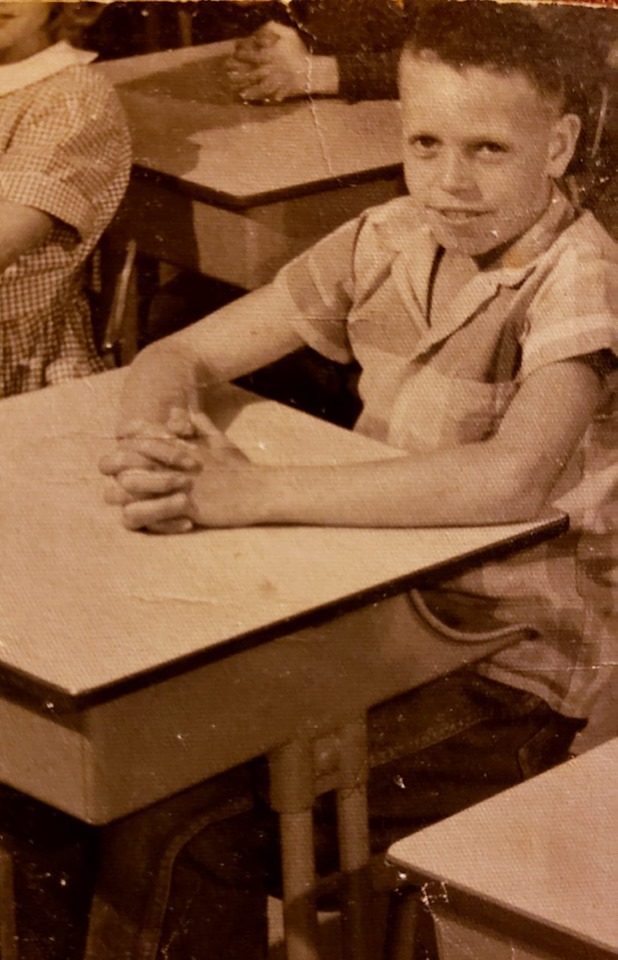
Raising cotton for the Butte Tribe had always been a family affair. Rodger started his work career picking cotton at age five for his Parrain. He was always looking for ways to earn a dollar. When it came to shaking pecan and walnut trees, he was the best tree climber. His teacher would buy blackberries from him for one dollar a gallon can.
By the time that Rodger was eight years old, he was working with his father, Duck Collum. Duck was a log hauling contractor. At age eight, he put his son to work on a tractor, pulling logs to load on trucks. As he grew, he learned to use a saw to cut trees, drive trucks to unload logs, and operate heavy-duty equipment at age fourteen.
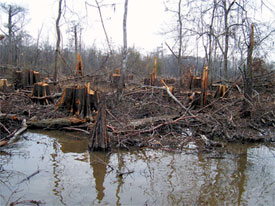
During the summers of his high school years, Rodger worked under a construction contractor, Clovis Carter. Construction of buildings interested Rodger. He paid particular attention to all facets of the job. By the time that he graduated, he bought a motorcycle, truck, and car. Work for him was not only a way of life, but a means for acquiring nice things and having the ability to help his people. Rodger worked for Carter for three years after graduation.
Destined to be a businessman, Rodger felt that he knew all that he needed to know to start a business of his own and quit his job with Carter. The next day with contacts that he previously made, he contracted to build three houses, hired several family members, and began working his new business.

Through the years, Chief Collum’s business has become one of the leading professional construction businesses in Northwest Louisiana. Services include but are not limited to certified residential and commercial construction and repair. In Natchitoches Parish, Collum contracted the construction of Fort St. Jean Baptist, medical buildings, government housing, and much more.
Collum had other sideline businesses. In the Trichel Community on Bayou Bourbeaux, he owned and operated a packaged liquor store. His cattle farm was profitable. Rent houses and trailer parks were other small business that he used to line his pockets.
Chief Collum never forgot his first job; his first responsibility was to his people. When the economy was low, Collum’s pull with government building committees awarded him construction contracts for government housing divisions. His people were never without work. Several elders have retired as his employees.
HUNTER-GATHERER
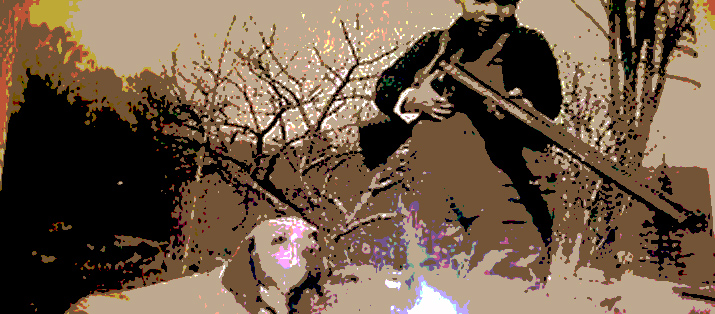
At the age of five, just before he turned six, Rodger was allowed to hunt by himself. He remembers going into the woods by himself, killing a deer, and dragging it home with the help of his dogs. That is only one story of hundreds because Rodger never went hunting without bringing home game.
Known by his people as an expert hunter, fisherman, and gatherer, when family needed/needs game to feed the family, they call Rodger to hunt with them. In the bayou, family hunts included/includes such things as deer, hogs, frogs, crawfish, alligator, coyotes, snakes, beaver, coons, and much more. His expertise in tracking has led to the saving of many lives.
Additionally, his tracking skills have assisted local law enforcers in finding victims of drowning and other unexpected deaths. He understands the waterways and trails throughout the Bayou Bourbeaux area. He is the first person to call for assistance by parish law enforcement when something goes wrong on his homeland.
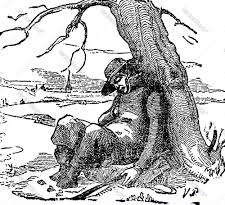
An example of his assistance in helping find a missing family member happened when he was a teenager. An elder cousin went hunting one morning and had not returned home. When Rodger received the message, he remembered unexpectedly meeting the cousin hunting in the woods at a specific out-of-the-way hunting spot. Rodger grabbed his gun and went straight to the spot that he had met his cousin. There, sitting under a big oak tree, was his cousin. He looked like he was sleeping, but apparently had passed away of natural causes.
CHIEF’S REGISTERED ILLEGAL WEAPONS

As a younger man, Chief Collum earned a reputation as a fighter. That reputation has followed him his entire life. Sometimes, the character of a person with such a label can be mistaken. Rodger will tell you that he does not go out looking for fights. Typically, he is in protection mode when events like that occur. Regardless, Rodger is a defender of the defenseless. That is true. For those on the receiving end of his anger, the stories never end well.
One day, Rodger and his attorney arrived at the parish courthouse. A claim was brought against Rodger for hitting a man and breaking his jaw. It was true that Rodger broke his jaw. Rodger claimed that he did not start the fight. That was the typical story when Rodger went to court for fighting. To be exact, this was the 32nd time he stood before the judge in eight years for the same charge. Needless to say, the district attorney was getting tired of seeing Rodger’s face, and more than tired of the dismissal of charges by the judge.
The judge was going to release Rodger of the charges once again. But, the District Attorney intervened. It was time for a change. The DA reasoned with the judge. Since Rodger never started fights, there must be something remarkably different about his hands that cause so much damage to a person when he hits them. Therefore, the DA suggested that the judge declare Rodger’s hands to be illegal weapons. To Rodger’s surprise, the judge agreed. If Rodger participated in a fight that he did not start, he was guilty if he used his hands. Rodger would have to learn how to walk away from fights.
The judge agreed with the District Attorney and declared Rodger’s hands illegal weapons. Legally, he is the only man in Natchitoches Parish whose hands have been registered as illegal weapons. He successfully stayed away from instances that may have gotten him in trouble for the probation period.
BILL’S CAFÉ – CAR ON FIRE

One weekend when Rodger was 16, his Collum grandparents needed his help. It was time to chop and stack wood for the winter. On Friday afternoon, he hopped on his motorcycle and headed to Martin, Louisiana.
When he got to Clarence, he stopped at Bill’s Café to buy a hamburger. The car lot was full of customers, so he parked his motorcycle in the back of the store. Walking to the front door, he passed an old car that belonged to an elderly couple he knew.
Something was wrong! As he walked past the car, he could see the back windshield was black. There was no such thing as tinted windows in those days. He walked around to the front of the car, and the windows were black there, too. He heard coughing. He smelled smoke!
Immediately, he tried to force the door open, but it was locked. Looking around, he found a huge rock and slammed it against the front windshield. It bounced back off of the window. Again, he picked the rock up and slammed it into the windshield one more time. The window shattered.
By now, the man in the car was not only coughing, now he was screaming. The car was going up in flames! Rodger reached in and pulled the older man out. By the time he reached a safe place, the vehicle was completely engulfed in fire.
While others were trying to control the fire from reaching the café, Rodger was in the middle of trying to save the victim’s life. The older man’s eyelashes were on fire, as was his hair. His body was burned in several places. Rodger used his hands to put the fires out and rolled the man in the dirt. Soon the police and the ambulance arrived to take the man to the hospital.
Previous to Rodger arriving at the cafe, the man and his wife had been heavily drinking. They drove to Bill’s Café to get something to eat. The lady got out and left her husband in the car smoking a cigarette. She locked the doors of the car as she went into the cafe. When the lady got inside the store, she began talking to friends. Her husband dozed off with a cigarette in his hand. He would have died if Rodger had not walked by.
FROGMEN ON THE BAYOU

Frog hunting on Black Lake turned into a near-death experience for Rodger and two of his cousins. One night in the late 1970s, when Rodger was in his early 20s, he and his cousins decided to go frog hunting. They were driving down Hart Road when suddenly a woman came running out of the woods onto the road. She was screaming, her clothes were torn and mostly ripped off of her, bloody and bruised. She was terrified!
Putting on the brakes, the men stopped the truck and jumped out to help the woman. When they reached her, the sound of a high-powered gun rang out in their direction. Heads all turned in that direction. The two cousins turned, ran back to the truck, jumped in, and began driving away, leaving Rodger and the woman standing in the middle of the road. When they passed Rodger, he threw the woman in the bed of the truck and jumped in behind her. Within no time at all, headlights flashed from the woods. A truck with a camper roared out unto the dirt road headed in their direction. It was pulling a bass rig.
To their disadvantage, the rescuers were headed down a dead-end road. The driver floored the accelerator. In no time flat, they made it to the end of the road. They were on the water’s edge with nowhere to go.
The cousins jumped out of the truck. One headed for the lake, jumped in, and swam for the closest, biggest cypress tree that he could find. The second cousin ran straight for the cabin in front of him. He slid beneath it with no thought of what varmint or reptile may be waiting for him under the house.
Rodger grabbed the woman and headed for the woods. The woman would not stop screaming in fear for her life. When they got to the woods, Rodger put his hand over her mouth and told her the be quiet, or they would die for sure.

By the time they got to the woods, the attacker had driven up and exited his truck with his gun. Rodger did not have a weapon to defend himself. Instinctively, he knew to count the shots. On the fifth shot, the man turned to retrieve another gun from his truck when Rodger ran from the woods and tackled the man. They both got in a few good hits when Rodger got a good look at the man. When the man broke away, he got in his truck and drove away as fast as he could, pulling his bass rig behind his vehicle.
The frogmen took their passenger to Bill’s Café in Clarence. From there, they called the police. The police questioned everyone while the woman was loaded into an ambulance and taken to the hospital in Natchitoches. In the meantime, the rapist got away.
A few weeks later, Rodger and his crew got a call to work on a project at the construction of a new paper mill. He arrived at the job site, walked to the project location of the job, and looked down a hole to see none other than the frog-hunter attacker working below. To ensure he was identifying the man correctly, Rodger went to get his cousin, who was working there with him. The cousin agreed that it was the man. Rodger headed down the hole and subdued him.
In conclusion, the man was fired from the job, arrested by police and taken to jail. Before the trial could take place, the man was diagnosed with a quick-spreading cancer and died. More interesting was he was a preacher of a Red River Parish Church.
COON DOG & MURDER

Chief Collum’s closeness to nature is apparent wherever he goes. In his 67 years, there is barely a foot of land on Bayou Bourbeaux that he is not innately aware of. Should one be so fortunate as to spend the day with him sightseeing, his stories, whether they be during the days of his ancestors or his lifetime, will captivate the listener.
Collum has been active in numerous outdoor sporting events throughout his life. He has accumulated a wide range of awards for his skills in outdoor fishing and hunting. Indian trail riding, camping with young braves to train them in the ways of his people, or fishing the bayou are just a few of the many adventures he has shared with his people.
Like his horses, he always owned pure-bred stock in cattle, dogs, chicken, and the like. One of his favorite things, like his forefathers, was the sound of baying hounds. Each year when hunting season came around, hunting fever was contagious. Hunters gathered in fields, built campfires, drank fire-water, smoked pipes, and listen to tribal story-tellers make known the stories of their ancestors.
Like his horses, Collum has always owned prize-winning, top-stock bloodline dogs. His collection of dogs has come from all over the world. One of Rodger’s many obsessions was coon dog trials. His prize coon dog, a Walker-Hound, was called Banker, whose registered name was Collum’s Lucky Banker. He was registered with Lords of London for $35,000. Banker won 36 state titles throughout the United States. Rodger and Banker were the first team to turn pro in the State of Louisiana.
Knowing that he had the best dog around, Rodger and his friend, Curtis, decided to enter the Texas District Coon Dog Trials to qualify for Nationals. The trials were held in Bowie, Texas, a five/six-hour drive from Natchitoches. They worked all day Friday, loaded up the dogs, and left late that night for their destination.
Around 3:00 AM that morning, the men were driving along a two-lane country road. Curtis was in the driver’s seat while Rodger rode shotgun, keeping his eyes on the road for any sign of trouble. The two-lane highway’s roadside was covered in high grass at least four feet tall. Beyond the truck’s bright lights that night, the route stretched on for miles and miles of total darkness.

Suddenly, the eagle eyes of Chief Collum caught something strange moving and reaching out on ground level from the tall grass. They passed the spot so quickly that Rodger could barely make out what he saw, but he knew it was human. A human hand was reaching out, touching the white line of the highway for help.
Immediately, he told Curtis to turn around. Curtis kept driving, thinking that there was no way that anyone could see something as small as that in the dead-of-the-night with the speed they were traveling. They were several miles down the road before Rodger could convince Curtis to turn around.
Curtis still had his doubts, but knowing Rodger, there was more of a chance that what he was saying was true, so he had no choice but to turn around. Rodger directed Curtis to the exact spot where the hand was stretched out, touching the white line on the side of the highway.
Remarkable! How could anyone’s eyes be so sharp as to see that hand in just a matter of seconds in the black of night? Rodger jumped out of the truck and ran to the person in the grass. Curtis had second thoughts and grabbed a gun, not knowing what they may be getting into.
At first sight, the man in the grass looked dead He was barely hanging on to life. His scalp was flayed back where his head was busted open, his skull was visible, and all his teeth knocked out. He was a bloody mess! This wasn’t an accident. It was easy for Rodger to see. What happened?
Curtis rode to the nearest town for help while Rodger stayed with the man. Before Curtis left, he gave Rodger his gun. Rodger stuck it in his pocket and sat down on the ground. He held the man. He could tell the man wasn’t going to make it. His injuries were too bad. While they were waiting for help, the man told Rodger what had happened.
Late that night, the man had picked up two hitchhikers who were walking on the side of the road. They were dressed in military uniforms.
Riding down the highway, the hitchhiker in the back seat picked up a tire tool from the floor of the car and bludgeoned the old man driving. The attackers left the man for dead and stole his car and all possessions. The man died there in Rodger’s arms about ten minutes before help arrived.
There was a lot of confusion when the police arrived. The gun in Rodger’s possession caused issues. Rodger related the story that the old man told him. Curtis told his story. It seemed like they might be accused of the poor man’s murder. Thankfully, before the day was over, the hitchhikers were arrested, and the stolen car recovered. Rodger’s story was confirmed. Months later, the men were found guilty in a court of law and sentenced to life in prison.
FIRST LADY, FIRST DATE

Born on the bayou, Chief Collum had/has always held the interests of many ladies throughout the area. Few, if any, held his interest like his wife, Charlia Presley Collum. He hit her world like a raging tornado!
Like everything he put his hands and mind to, she was his long before she knew it. Needless to say, their first date was something that she will always remember.
Rodger always took pride in his dancing skills, which was verified by the number of women who lined up to dance with him when music playing. So, naturally, for his first date with Charlia, he decided to take her to a local honky-tonk and dance the night away. Charlia loved to dance but had never entered the door of a “honky-tonk.” She was not sure what made them different from what she called a normal night-club. So, out of curiosity, she was up for the challenge. Rodger picked her up for a night of fun and dancing, and they were on their way.
When they arrived at the club, the parking lot was full. As they walked through the door, Charlia could feel a difference. She couldn’t put it into words, but this place was different. There was a feeling of excitement, along with a feeling of danger. She knew, for sure, it wasn’t a place that she would like to be without Rodger. They sat down, had a few drinks and danced. Rodger had pretty much drained the energy out of her with his dancing.
Before long, they decided that they would leave to eat supper before restaurants closed. Walking to the parking lot, they heard a collision of vehicles. The parking lot was blocked. A truck was in the process of attempting to move to an open area to exit. When, suddenly, the driver’s side door was flung open by a man holding a knife. The man yanked the driver out of the truck and began fighting. He slashed and cut the driver’s throat deeply. The truck passenger ran to his friend’s defense and was stabbed by the man with the knife.
Rodger and Charlia watched all this from his truck’s front window as they waited to leave the parking lot. Rodger jumped out of his truck and headed for the fight. On his way, he saw what had caused all the commotion. The driver of the truck side-swiped the vehicle belonging to the man holding the knife. In a hurry to leave the parking lot before he got caught, the driver of the truck was blocked and couldn’t move forward.
Rodger arrived after the stabbing of the truck passenger. The angry man was going down for another stab at the passenger when Rodger grabbed the knife from his hand. Rodger told the man to go on home because the police were on their way. When the police arrived, they took statements, arrested the men and took them to the hospital.
Rodger walked back to his truck with ease, opened the door, and looked at Charlia. The look on her face was comical. Her eyes were wide with shock, and her mouth was wide opened. She just sat there saying nothing as Rodger drove out of the parking lot onto the paved road.
As soon as the rubber hit the road, she bellowed, “What just happened? Are you crazy?!!!”
Rodger explained that he had to help the man with the knife. If the man had been there when the police arrived, he would have been arrested and sent to prison.
In the end, Rodger took his date home. For him, it was just another night on the bayou. For her, who knew? He left with a grin wondering would this woman ever have anything to do with him again.
FAMILY BURIALS
From an early age, when there were deaths in the family, Rodger was in charge of seeing to the burials. There were specific rituals that were involved in burying family members. Rodger and specific cousins would dig the graves. Family members would sit up all night with the body of their dead loved ones during the wake the night before the funeral at Christian Harmony Baptist Church in Pace Community. During the funeral, the family would ask Rodger to drive the hearse to the graveyard. In his lifetime, Rodger counted 69 family members that he had buried.
Rodger told one story about burying his uncle that was rather comical. Rodger did not have time to go to the graveyard to show the funeral director where to dig the grave. Instead, his cousin took his place and pointed out the location of the gravesite. The grave was dug, and the funeral proceeded.
One week later, an old lady called Maw Louella. She complained that Louella’s son was buried in the old woman’s plot. Sure enough, the lady was correct. Maw Louella called Rodger. His instructions were to go to the St. Maurice cemetery, dig his uncle’s body up, and bury him beside Rodger’s brother.
While digging the new grave, Rodger was curious about something that happened at the wake. Rodger’s uncle had lent a $100 to a family member before his death and had never been repaid. That night at the wake, this lady cousin walked up to the casket crying and making a big show of putting a $100 in the uncle’s pocket as he lay dead in the coffin. She remarked about the repayment of the debt so that everyone could hear it and walked away crying.
Now, fast forward to Rodger moving the body to the new grave. Rodger’s curiosity got the best of him. He opened the coffin and reached in his dead uncles’s pocket to see how much money his cousin actually put in the pocket. He pulled out a one-dollar bill. Laughing at the dollar bill that he held in his hand, Rodger gave it to a cousin standing nearby while they finished re-burying their uncle.
COMMUNITY LEADER, CHURCH, SCHOOL AND PACE RECREATION CENTER
Pace Community is located in Natchitoches Parish, Louisiana. From the founding of the community in the mid-1800s, the Desadier family has been the principal community leaders. All community property was donated in some form by the Desadier family. The first community building that served the people was the Desadier School. It was erected on Desadier land by the 3rd Butte chief, Chief Joseph Desadier Jr., shortly after the Civil War for Native American children of Bayou Bourbeaux.
The tribe’s children were not allowed in the all-white school of the nearby town of Clarence. Tribal stories were handed down about eight of the tribe’s children who were removed from the tribe by federal forces and sent to boarding schools from which they never returned. At the turn of the century in 1906, Chief Felix Desadier, was recorded by the local newspaper as repairing the old building that was soon replaced by a new school, Pace School.
Throughout the decades, the school became the Pace Community School. For years the community center was the hot spot for all community activities. As the nearby town of Natchitoches grew, social activities merged in that direction. Use of the Community Center began to decline as the need for repairs was evident.
One day, Chief Collum received a call from a concerned community member regarding the community center. Collum was told a person on the board claimed the land as being evacuated and as belonging to her. Collum immediately went to the parish officials to find out the details of what was happening. He went straight to his attorney and the start of a strategic community legal battle against the people attempting to make the community center and land their property. The case ended with a finding for Rodger Collum and the community center.

The picture above shows Chief Collums close relationship with leading political figures within the community, parish, and State of Louisiana.
As a construction company businessman and owner, Rodger began a total remodeling of the center. He incorporated it as the Pace Recreation Center. To accomplish the project, Rodger raised over $69,000 from local businesses and political leaders. Today in 2020, the recreation center is still the center of activity for the community. Butte Tribe gatherings are held there until our cultural building is completed.
Rodger Collum served as president of the board. He retired from that position but is the lead contact when issues arise that need to be attended to for any community happenings.
Throughout the years, Rodger has been credited with saving many lives in the community. Additionally, throughout his lifetime, he was the first call by family/community members to help with numerous accidents and deaths. During the recent 2016 flooding, law enforcement called on Rodger to help rescue community people and recover drowned bodies.
From the day that he received the treasures in the old chest until today, Rodger has borne the burden of the family leader alone. Today there are multiple clans attached to the family. There have been separations through family squabbles, but with Rodger’s leadership, the families have stuck together. When there is trouble, Rodger is the one that the family calls. When there is death, Rodger is called first.
Often, he, himself, has met the expense of funerals of those who could not afford burial cost. More times than he could count, he has given money to family members who had no money for food or clothing with no expectations of the money returned. He has provided food through community gardens. In natural disasters, local law enforcers call on him to help gather his people together.
WINN PARISH DISTRICT JUDGE
Chief Collum has close, personal relationship with local, parish and state officials. His influence with his family/tribe, community, and business relationships put him in a position to draw political leaders’ attention throughout the parish and state.
Several years ago, Collum had a disagreement with a public official in neighboring Winn Parish. The Natchitoches sheriff called Collum and asked him if he would ride to Winn Parish to settle the affair. Rodger agreed to ride with him to take care of the court-related business.
While waiting in the courtroom for his case to be conducted, a man entered with a gun. He angrily threatened the life of the judge who was sitting on the bench. The chief looked at the man for a few seconds to see if what he thought he was looking at was happening.
Chief Collum jumped up and quickly got in the face of the man with the gun. To those who know the chief, they know that he can be a very intimidating character. To the court’s surprise, Collum confronted the man by acting and talking irrationally. The man was startled by the chief’s actions. Collum looked the man in the eyes and said, “This is a good day to die!” Before the man knew what happened, Collum yanked the gun from the man’s hands.
It took a few seconds for the court police who were standing in the background to recover from what they were watching. When Collum had possession of the gun, they ran forward and subdued the attacker.
Needless to say, there was a lot of talk and excitement in the Winn Parish community that day. North Louisiana TV news channels carried the story.
To be expected, local police took all the credit for the capture. The press did not note that the court police stood back and watched as Collum put his life on the line to save the judge.
After the attacker was removed from the courtroom, the judge called Chief Collum to his chamber. He questioned Collum about the charges that were being brought against him. Chief admitted his guilt concerning the issue and explained how the police authorities had intentionally put him in a position of non-compliance regarding the charges.
At that point, the judge returned to his bench. Charges against Chief Collum were dropped and expressed his sincere thanks for saving his life.
LOCAL ELECTIONS
Local and nearby parish political candidates bid for Rodger Collum’s support as community and family leader to win elections. His support has proven to be the difference in winning political positions for many candidates throughout the years. With his support of local and parish elections, he has raised multiple thousands of dollars for community facilities and events.
HONKY-TONK NIGHT
A southern-country rock group was playing at a local bayou honky-tonk on a Saturday night. Outside, it was hard to find a parking space; inside, there was standing room only. The bar owner and his wife were playing pool with another couple on the opposite side of the room. Chief Collum was standing at one end of the bar listening to a drunk older man arguing with the barkeeper.
With no intention of giving in to the barkeeper, the old man insisted that he be sold a bottle of vodka. The barkeeper kept telling him that the bar only sold mixed drinks, which made the old man angrier. Rodger could see that the old man was seriously upset while the bartender was basically ignoring his drunken talk. Then, Rodger heard the old man say that he was going to get his shotgun out of his truck and kill the owner and the barkeeper. Again, his talk was ignored by the barkeeper.
Unlike the bartender, Rodger did not take the comments lightly. He followed the old man to the door. The old man headed straight for his truck, pulled out a single-barrel shotgun and loaded it. Rodger watched as the old man put a couple of shells in his pocket. Leaving the door wide opened, he stumbled back to the night club’s front door. Walking through the door, his gun was pointing toward the pool table. He felt a sudden jerk of his shotgun when the shot rang out, hitting the ceiling. A pellet from the gunshot ricocheted hitting Rodger in the ear. Rodger’s ear was bleeding profusely as blood streamed down the side of his body.
Several men moved toward the old man in retaliation for his actions. Rodger held the crowd away from the old man and made him sit at a table until the police came. When the police arrived, they tried to talk to the old man about what he had done. The old man told the police if Rodger would give him the gun right now that he would kill them. There was nothing that the police could do but handcuff him and take him to jail.
Rodger received calls from the bar owner for several days after the arrest. The owner wanted Rodger’s advice about pressing charges against the old man. He did not want to press charges because the old man was drunk and did not have too many more years to live. Pressing charges against him for attempting to kill would be like giving a death sentence to the old man. Rodger spoke to the District Attorney concerning the issue. It was settled by not filing charges and banning the old man from the bar’s property. He died a few years later.
As for Rodger’s injury, he was hit in the ear by a rick-a-shay shotgun pellet hitting the ceiling. As Rodger would put it, he “bled like a stuck pig,” but he was not seriously injured.
UNEXPECTED INTRUDER
A drunk, Mexican migrant-worker left the Bayou Club Honky-Tonk walking late one night around midnight. Earlier in the night, he refused the ride home with the group that he arrived with. As he was walking, he saw a light a short way down a dirt driveway. He stumbled on the porch, opened the screen door, and reached for the doorknob. The door was locked.
Inside the house, a frightened family was locked in a bedroom, not knowing what to do. The elderly man picked up his phone and made a call to Rodger, who lived nearby. He asked Rodger to please hurry over to see what was going on outside. Rodger grabbed his gun and headed toward the neighbor’s house. Rodger picked up a cousin on his way. The cousin had his gun and was waiting at the end of his driveway when Rodger drove by.
While Rodger was on the way to the neighbor’s house, the Mexican broke the windowpane of the front door and stuck his arm through the broken pane to open the door. The elderly man of the house stepped out of the bedroom with his loaded shotgun when he heard the pane break. When he saw the hand reach through the pane, he shot!
He heard the man at the door, screaming and retreated to the bedroom, locking the door. Not knowing if the intruder was dying or injured, the family huddled on the far side of the room, waiting for what might happen next.
When he arrived, Rodger and his cousin grabbed their guns and jumped out of the truck. The Mexican was lying on the ground with blood gushing out of his leg. Rodger headed toward the house to make sure everyone was safe while his cousin held a gun on the Mexican. The old man was afraid to come out of the bedroom for fear that he had killed the prowler.
As Rodger and the old man walked out on the porch, the Mexican stood up and ran toward the woods. The cousin called out for the running man to stop. The man kept running while the cousin just stood there, not wanting to shoot. Rodger took pursuit of the running man, caught him quickly, and escorted him back to the front yard at gun-point.
In the end, the police arrived to find out the man thought that he was entering his own home and not intentionally trying to hurt anyone. He was taken to the hospital by ambulance. After several days in the hospital, he was arrested and deported to his homeland of Mexico.
MISSING DEACON
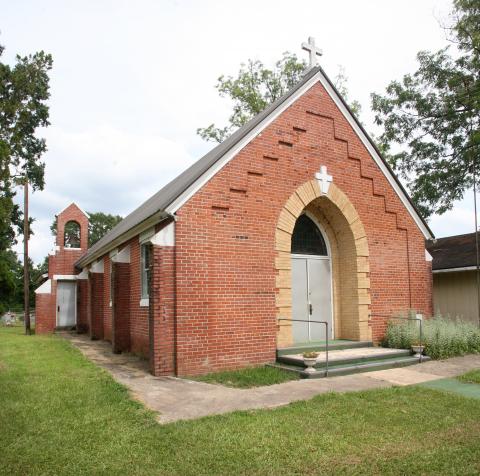
Riding home with his wife from Winn Parish, Chief Collum received a call from an elderly lady in the community. She was a member of the Catholic Church in the Trichell Community. She was concerned about a deacon, caretaker of the church. He lived in the parsonage next to the church. The man was an eccentric and did not like to be around people that much. He was the type of person that others felt uncomfortable around. One of the only people that he would talk to was the chief.
The lady told Rodger that the deacon did not show up for mass on Sunday, and no one had seen him for several days. She asked Rodger if he would take the time to check up on the deacon to see if he was alright. Rodger took his wife home and drove by the lady’s home to pick up her husband, a retired deputy sheriff, to go with him to the parsonage.
When they arrived at the parsonage, the retired deputy would not get out of the truck. Rodger walked to the door and knocked. No one answered. The door was locked, but the doorknob was loose and almost falling off. Rodger knocked a couple more times without any success of getting the deacon to come to the door. Next, he bent down to see if he would have any luck looking through the crack created by the loose doorknob. He saw nothing, but a familiar smell seeped through the gap, the smell of death.
Rodger called the sheriff’s office and told them about what was going on at the church. He was advised to break into the house. When entering the house, the smell was much more pungent and unmistakable. Rodger found the deacon in his bedroom. Rigor mortis had set in, and the deacon was kneeling at a table in a praying position. The man had been dead for approximately three days.
FLOOD OF 2016

Spring of 2016 was a devastating season for the community of Bayou Bourbeaux. Rain set in, and everything on the north side of the levy went underwater; everything, that is, except for Chief Rodger Collum’s house built on stilts. He was constantly getting calls from the community to help rescue those in need.

On the evening of March 13th, 2016, Chief Collum had just pulled up to the south side of the levy on his way home from work. From there, he would climb into his boat, crank up the motor and go home after a long, hard day at work. His phone ran as he stepped out of his truck. The call was from the Natchitoches Sheriff’s department. A report of a drowning had been called in.
A deputy sheriff was on his way to the levy and needed Rodger’s help. The incident was on the north side of the levy near the chief’s home. Darkness had already set in. By the time Rodger got the boat running, the deputy had pulled up, and their search for the victims of the boating accident began.

The accident occurred as three family members were attempting to retrieve items from their home when their boat capsized. One person drowned, and the other two were holding on to the boat for dear life. When the rescue boat arrived at the reported area, there was no one there. The search continued further down the flood water path.
SNAKE BITE

Not long after this incident, another neighbor needed help getting to dry land because their house was going underwater. Rodger stepped into his rubber boots and headed out the front balcony of his home to load up the boat for the rescue. He started the motor, sat down on the seat, and grabbed the ledge of the boat when he immediately felt something clamp down on his wrist. Instinctively, he jerked his hand up and grabbed his arm with the other hand to see what was happening.
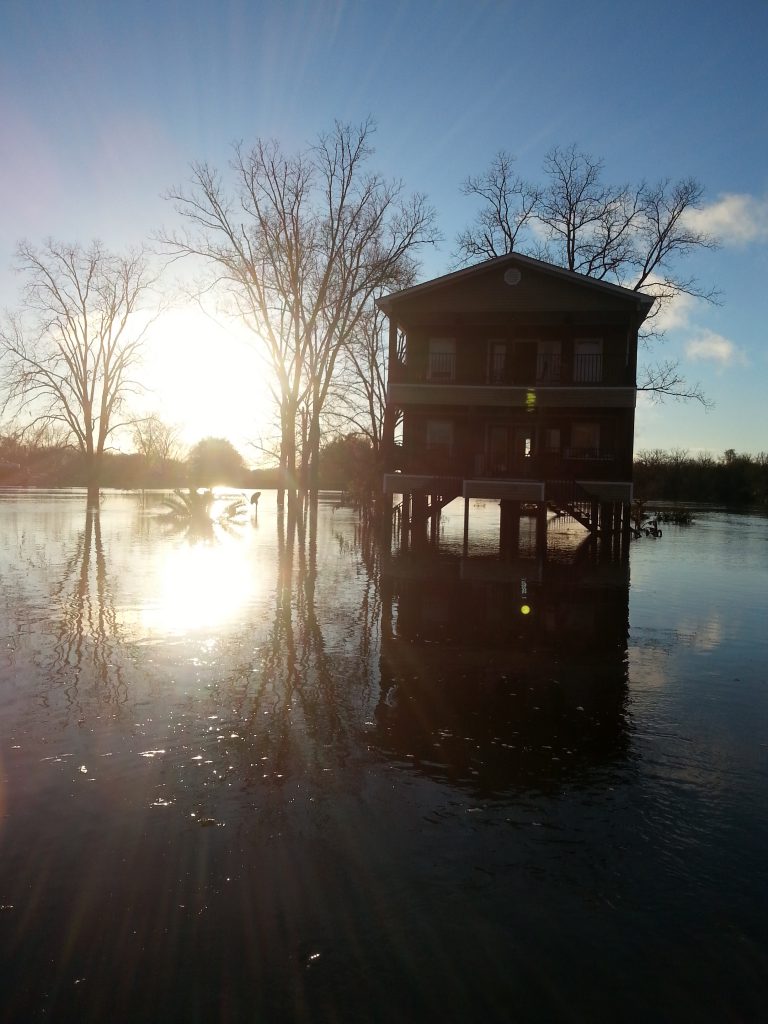
Attached to his wrist, dangling from his arm, was a short, stocky copperhead snake. With the snake still attached to his wrist, Rodger clutched the copperhead with one hand and grabbed his knife with the other. With one slice, he removed the head of the snake. Detaching the head of the snake from his arm, he then cut his hand at the point of the snake bite. He began sucking the poison out by mouth. It took several months for Rodger to recover from the snake bite. Still, the rescue of those in need continued as it does today.
BUTTE TRIBE GARDENS
For as long as Chief Collum can remember, gardens have been planted on Butte land for family and the surrounding community to gather vegetables to store and feed their families. Raising the gardens was something that was never really talked about. It was something that everyone just did.
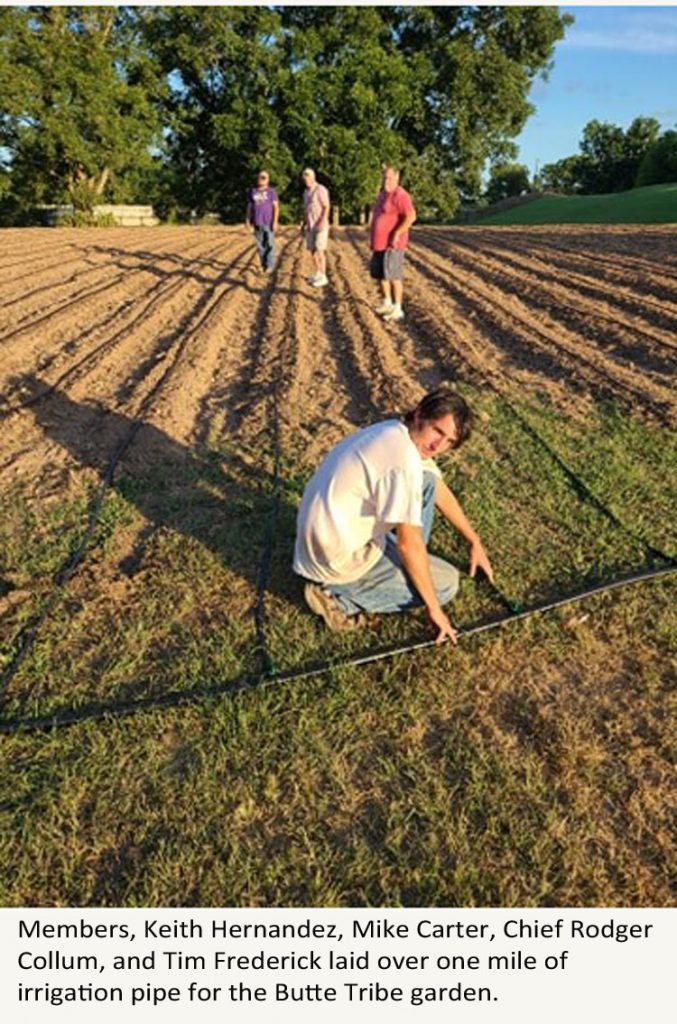

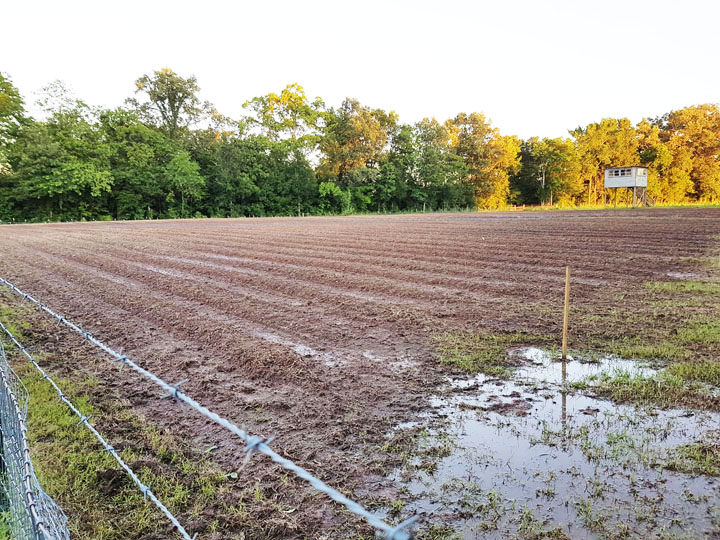
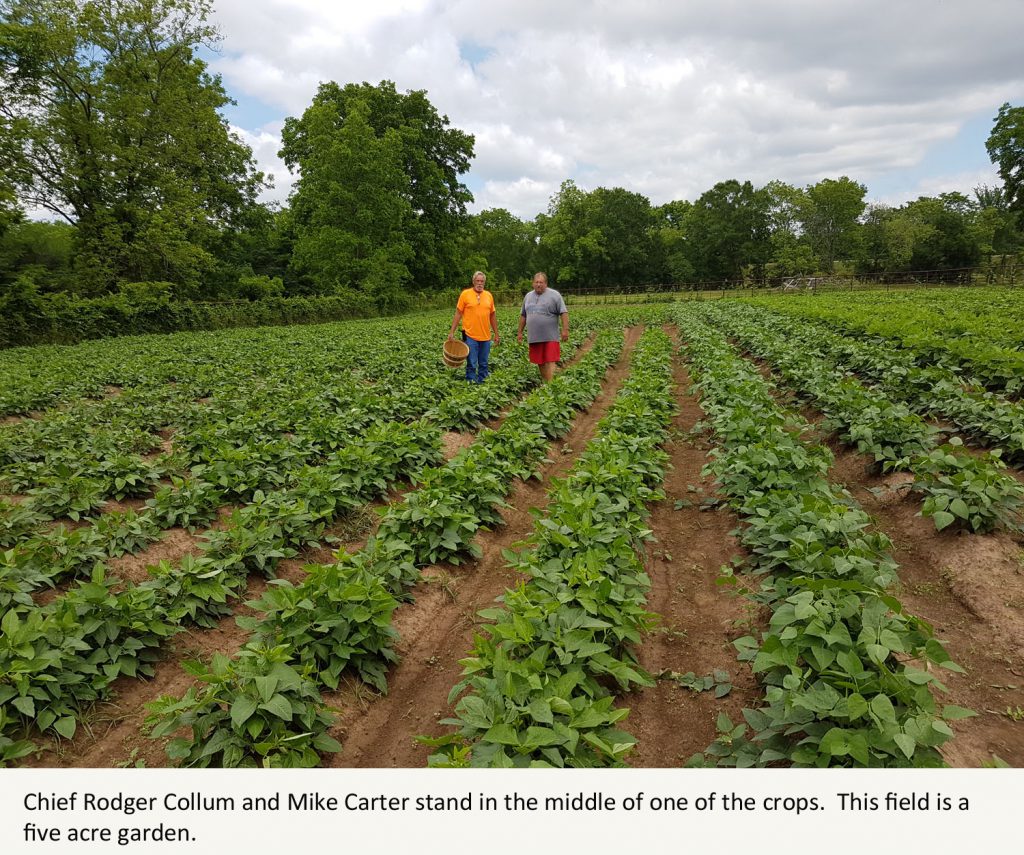
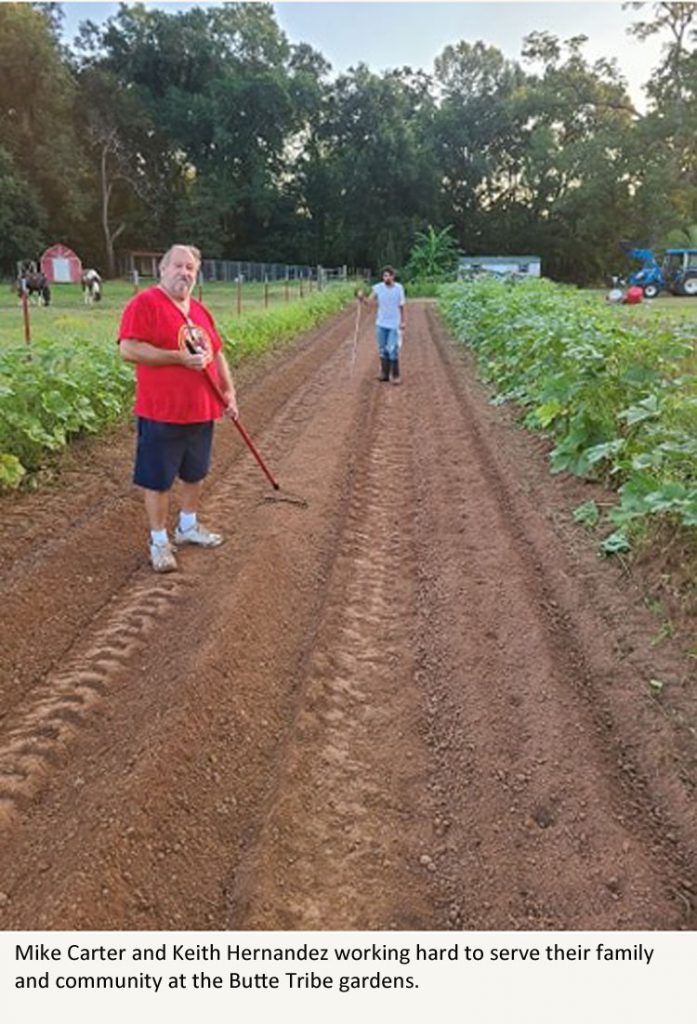


The 2020 season was no exception. Chief Rodger Collum and Butte Tribe members worked diligently preparing the soil, planting, and harvesting vegetable crops for tribe members and the community. It wasn’t an easy year. The COVID pandemic, scorching weather burning up crops, and Hurricane Laura destroying a newly laid irrigation system approximately one mile in length, the Butte Gardens took a toil on the workers and the chief’s pocketbook.
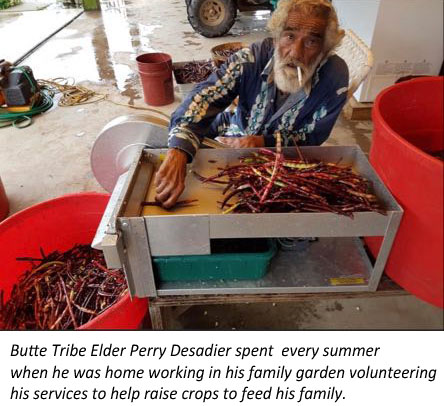




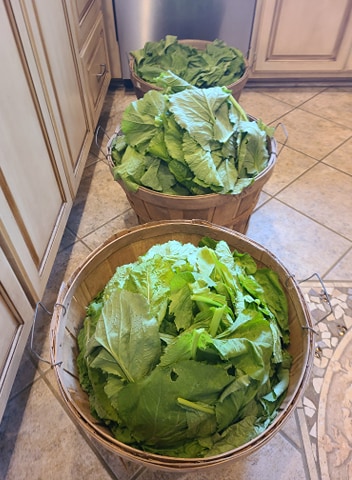
In 2020, Butte Tribe lost a significant player in planting and harvesting its gardens. Perry Desadier was Chief Collum’s right-hand man. Perry loved to work in the garden. Next to Chief Rodger Collum, other central Butte people who need to be mentioned in raising and processing the Butte gardens are Charlia Collum, Mike Carter, Keith Hernandez, and April Womack.


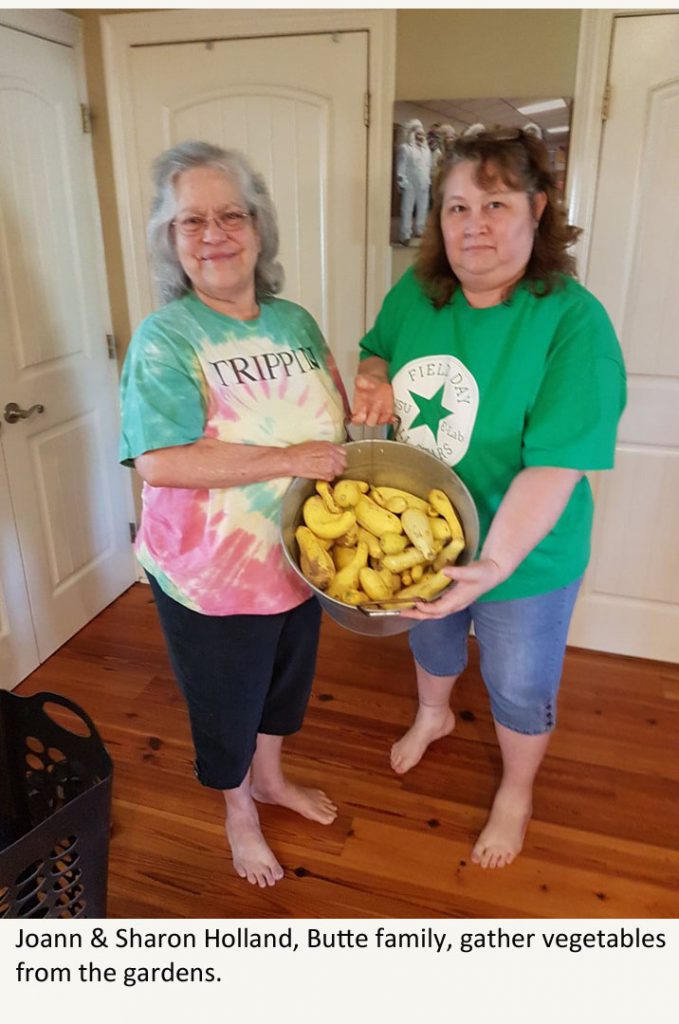
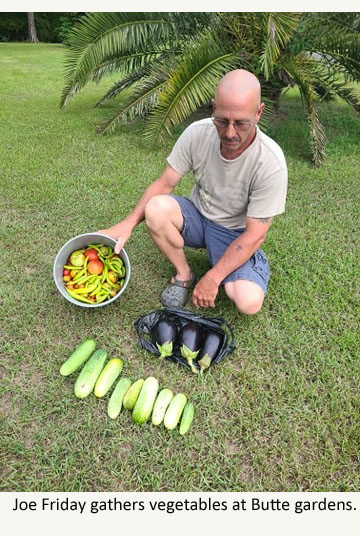

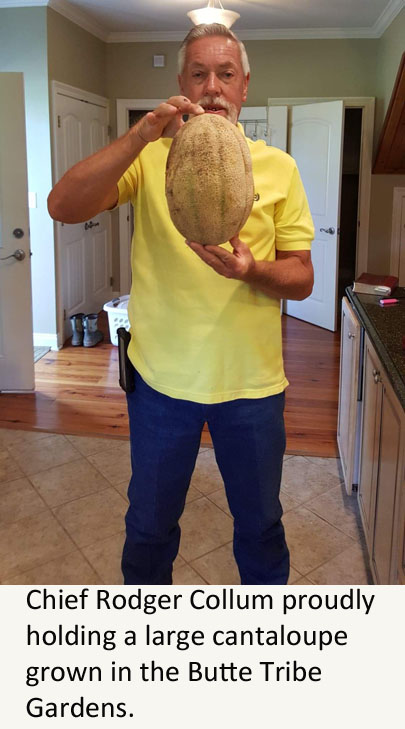




ARTIFACTS IN THE TURNIP PATCH

Summer of 2020 was a hectic time on Butte lands. Numerous hurricanes hit the Gulf Coast and brought damaging winds to the Chief’s land. Butte Gardens saw extreme heat, heavy rains, and whipping winds causing intense farming processes to raise the tribal and community gardens for all to enjoy. Family and friends came from near and far to gather crops.
Several unusual artifacts popped up as people harvested beans, greens, and turnips to everyone’s surprise. Chief Collum was picking peas and found a beautiful spade-arrowhead and an indigenous knifepoint. Friends came by to pick turnip greens and pulled up a strange rock wrapped with roots carved in the form of an animal or human face design. A few days before, a beautiful spade-arrowhead revealed itself. Again, a view days later, Council Member Tammy Perot found a small, unique iron shaped hatchet.

All of these finds are just additional proof that the grounds that the Chief built his house on were parts of the Collum Temple mound that extended further out on his land than expected. For sure, there was heavy native activity in and around this piece of ground.
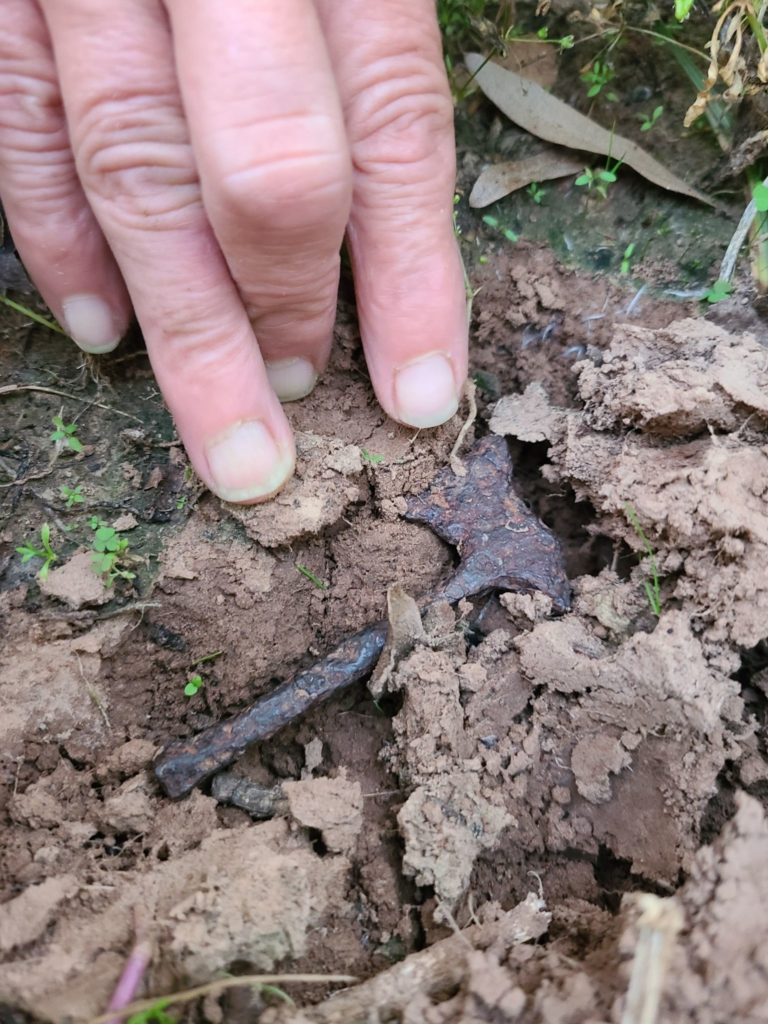

CEREMONY OF FEATHERS

Today, stripped of culture and tradition by the United States government in the early 1800s, the Butte Tribe of Bayou Bourbeaux has picked up the pieces under the leadership of Chief Rodger Collum and is moving forward. Collum decided to reveal his family and its history as an original tribe of Bayou Bourbeaux in April 2019. He is moving his tribe toward its own pathway. It is a conscious move toward distinctiveness as a tribe. This move was not made in disrespect or dishonor of those Native Americans who move in the customary, traditional ways. For Butte Tribe, this move to individualism is a necessity. It is built on the idea that it would be best to move forward without the concern of offending general Native American policy. Therefore, Butte Tribe will not be intentionally dishonoring the traditions of other tribes by acting on its own system of custom and traditions.
“Ceremony of Feathers” was established by Chief Rodger Collum. Members, men and women, of the Butte Tribe, are required to earn their feathers in a way set forth by their chief. In general, Native American women do not wear head-dresses. There are tribes throughout the United States, like Butte Tribe, where women proudly adorn themselves with feathers for special occasions.

Chief Collum and appointed members have dug many graves for family members throughout the years. It is understood by the majority of family members that Chief Collum is the assigned chauffeur to drive the bodies to the cemeteries. For cremations, each tribal member either places a shovel or handful of dirt in the grave. For regular burial services, each person places a feather on the coffin as a sign of love and respect.
TEACH THE CHILDREN
Chief Collum always felt the need to teach the children. When Rodger’s son, Shannon, was old enough to camp with him on the weekends, it became a traditional event. Each weekend, Shannon and other boy cousins his age would meet at his house on Fridays after school to go camping with his dad. The boys knew exactly how to prepare. They were not to bring food. Everyone was responsible for gathering or hunting their food. They could share with others if they wanted to, but everyone was on their own. That was understood. Rodger would arrive home on Friday afternoon with a yard full of rowdy boys ready to go hunting. Typically, the first night, Rodger would make the first kill and share it with the understanding that from that point on, everyone was responsible for their own kill.
When the time came to reveal the hidden identity of the tribe to the public, there was an intense need to search for and create, if needed, cultural and traditional activities of the Butte Tribe. There were obvious cultural behaviors such as respecting elders, but so much had been lost. Butte Tribal Council decided to hold an annual cultural day celebration and invite a neighboring tribe to teach cultural and traditional activities of the visiting tribe. The first cultural day was held in July of 2019.
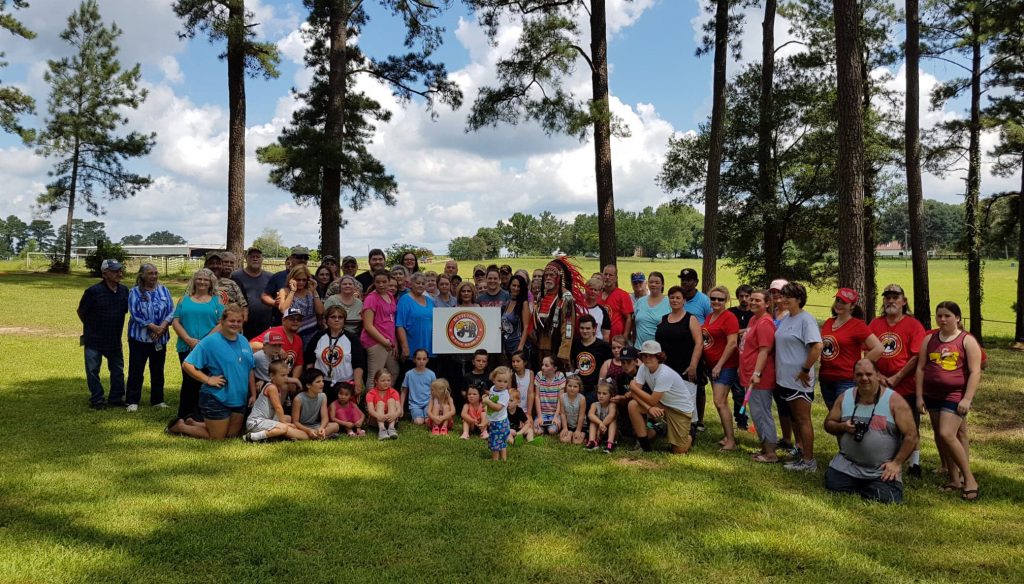
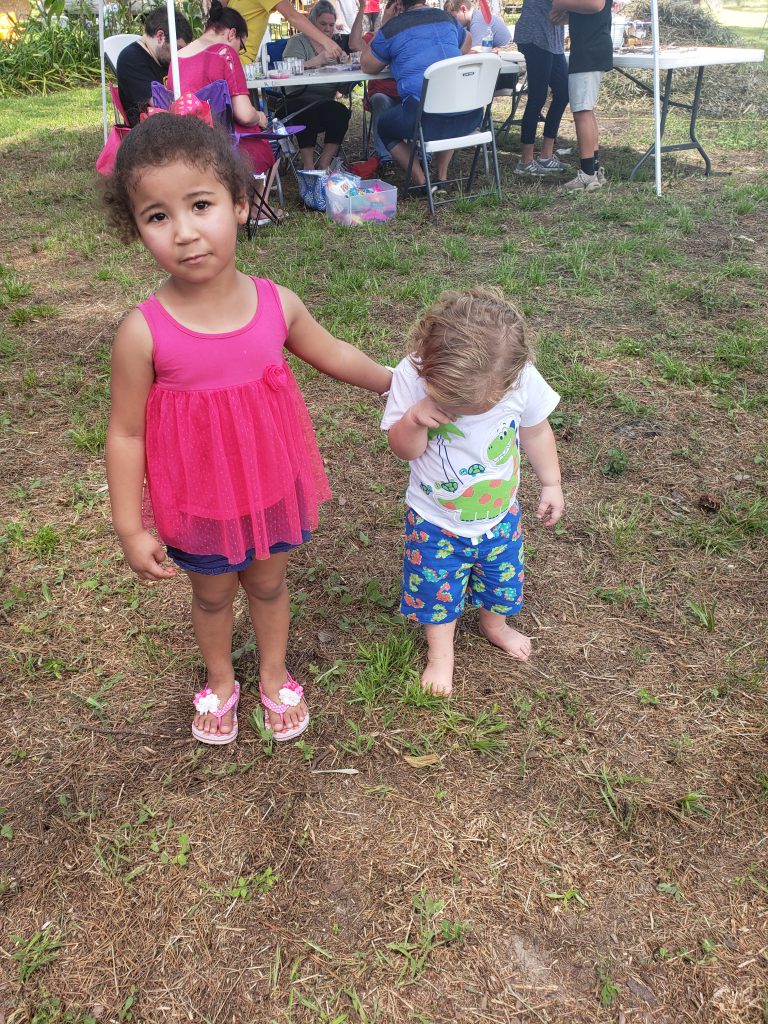

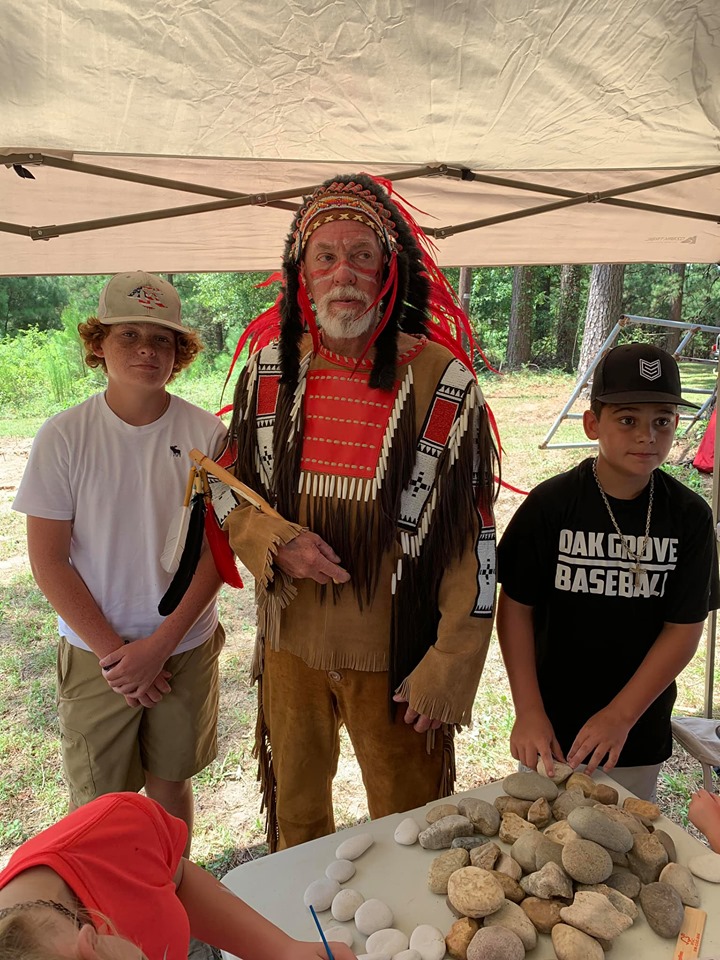


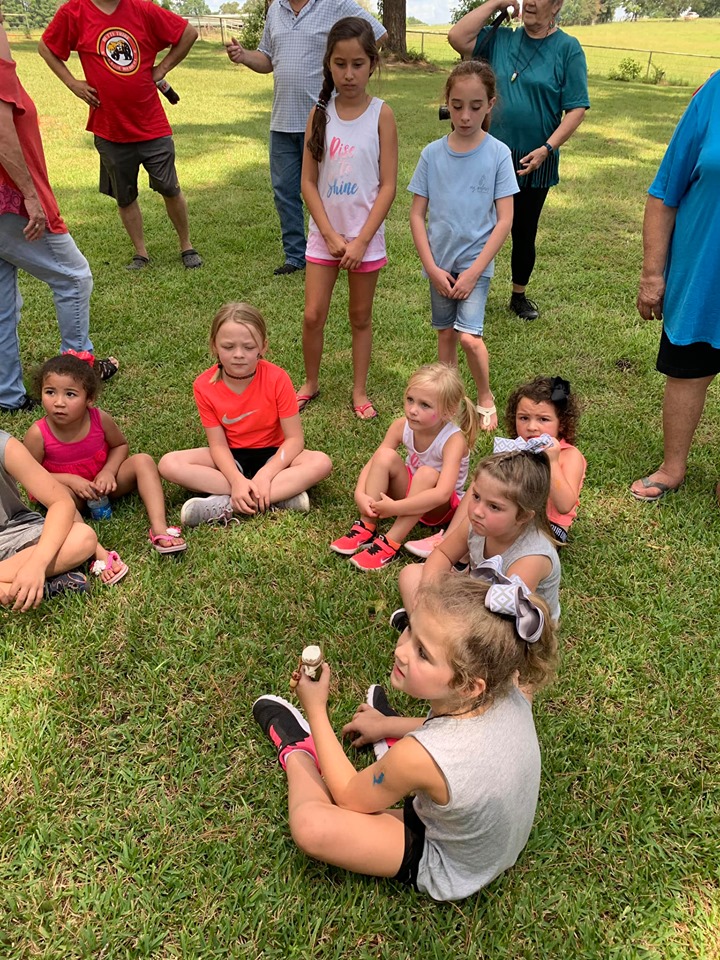




HISTORY OF BUTTE HILL

Only one person is left to tell the story of Butte Hill and its secrets. Carefully guarded for over 200 years, the past chiefs passed the story down to the next successor until the time of revealing on April 6, 2019. Chief Rodger Collum told the story that was told to him so many years ago as a child. What remained of the elders stood with him on that faithful day.
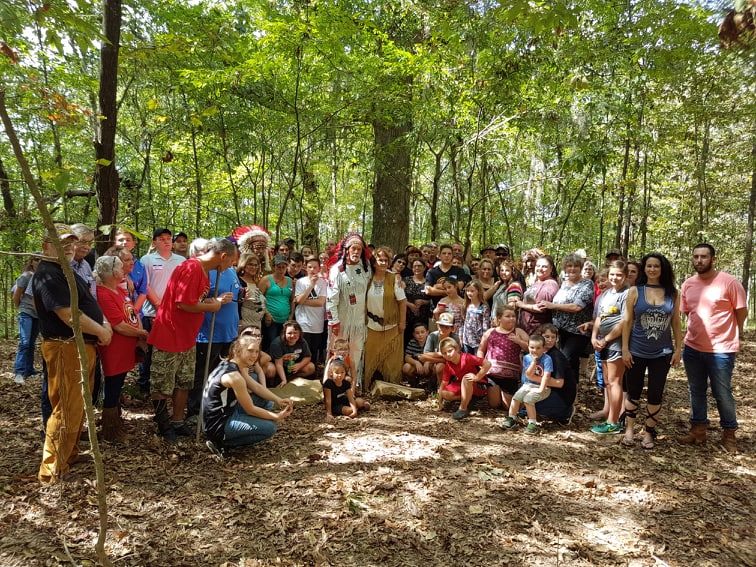
Chief Collum has since visited Butte Hill with his tribe and stood at the foot of the graves of White Smoke and Two Moons to tell the story of their arrival. A quiet, soft breeze brushed the faces of those who listened to the stories told by their chief.
CONCLUSION
Roger has held many tribal meetings over the years in the old schoolhouse turned community center. These meetings were essential to keeping the family together. They helped to build continuing bonds within the family by discussing family issues, raising funds, teaching tribal history, and repeating the stories that were shared by the elders. The importance of this cannot be understated by those who do not understand the ways of his people. The stories and many more that have yet to be told need to continue to live on with future generations as requested by the elders.